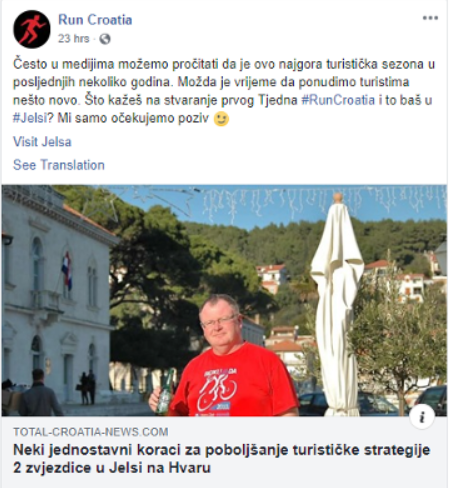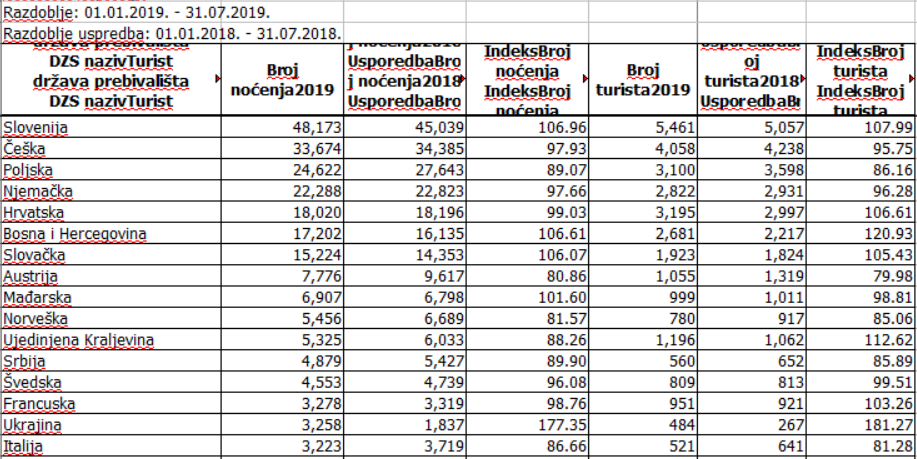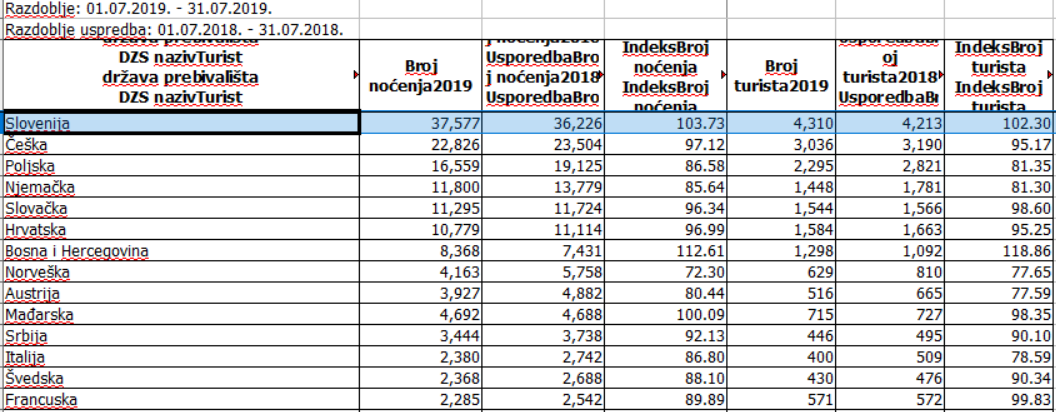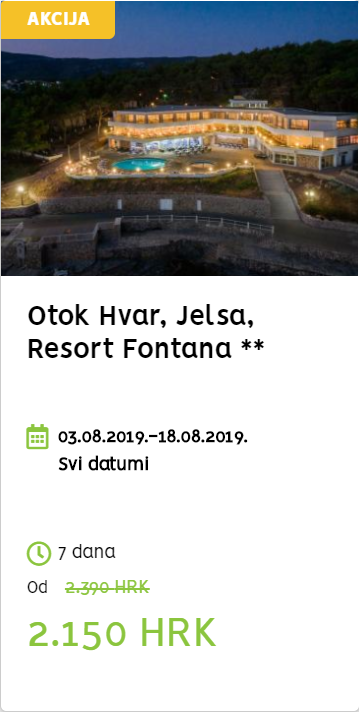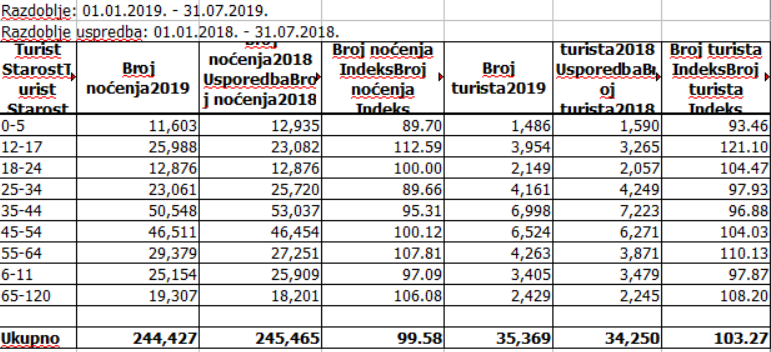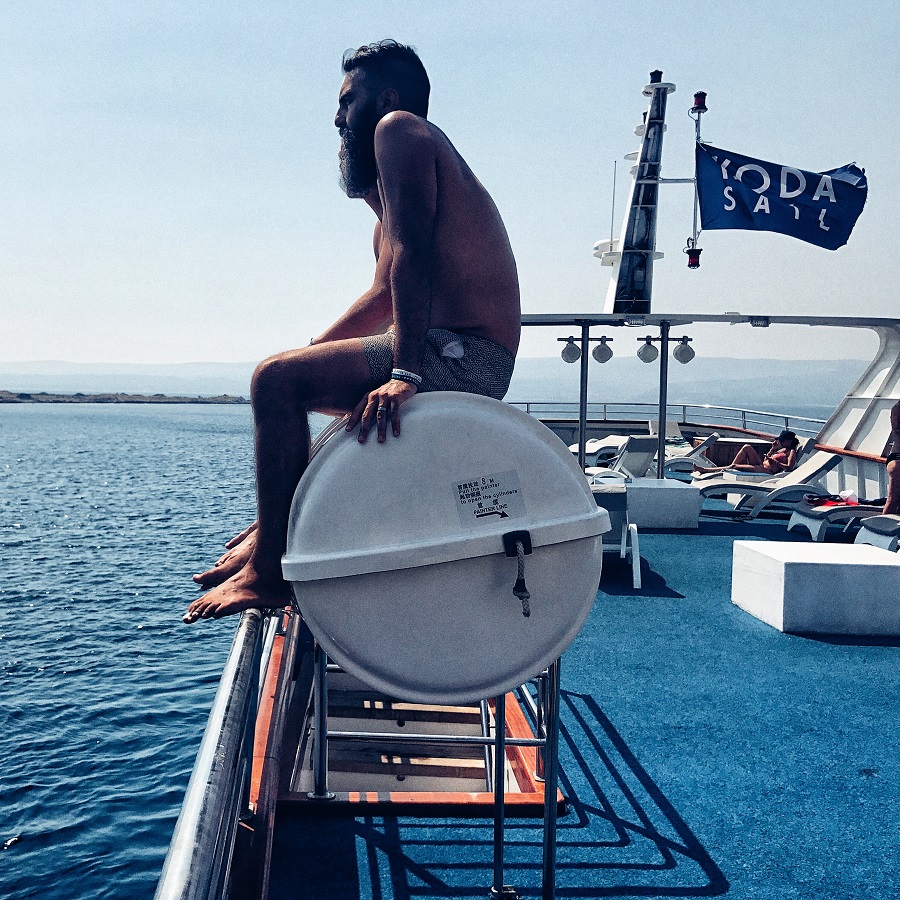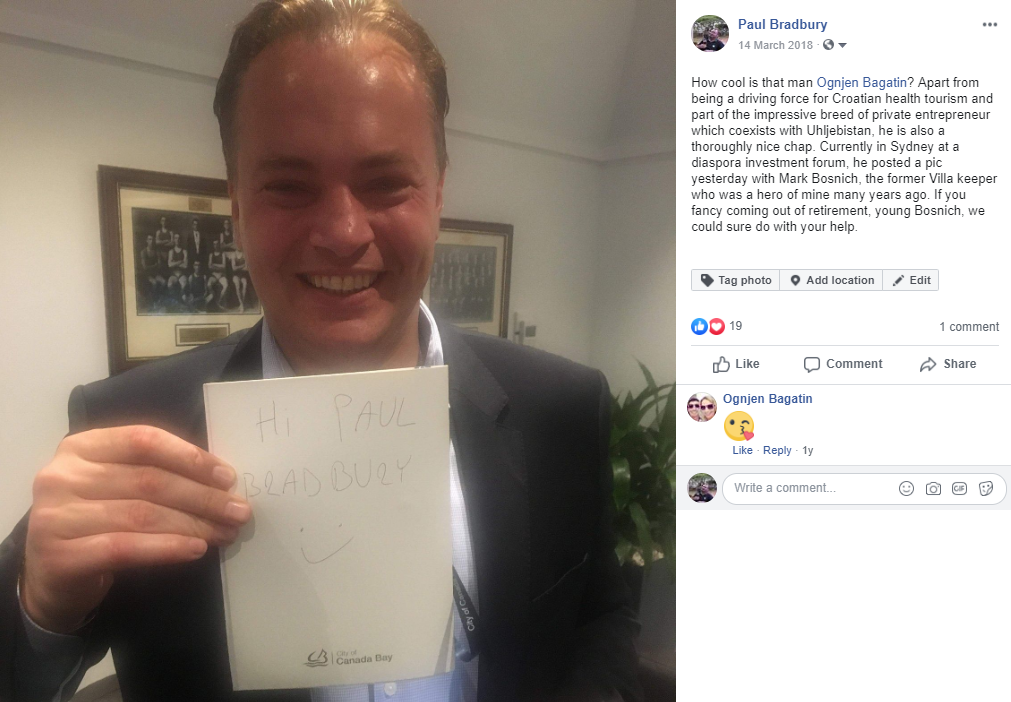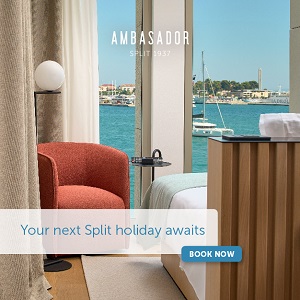Italy Highlighted as One of Important Markets for Croatian Tourism
As Morski writes on the 6th of August, 2019, Italy represents one of the most important markets for the Croatian tourism sector, from which Croatia achieved an impressive 579,000 arrivals and 2.3 million overnight stays so far, representing a 1.3 percent increase in arrivals and 2.4 percent increase in overnight stays when compared to the same period last year.
Positive results were also achieved back in July, during which Italian tourists accounted for 209,000 arrivals and 1.1 million overnight stays, which represents a growth of 1.5 percent in arrivals and 3 percent in overnight stays when compared to July last year.
Croatian National Tourist Board (HTZ) Director Kristjan Staničić points out that the above results are excellent indicators for Ferragosto, the period when the largest number of Italian tourists come to stay in various Croatian destinations.
''The majority of tourist traffic from the Italian market is yet to come, as was confirmed by the announcements for August and the first half of September by key partners, tour operators and agencies. This is the result of a continuous and proactive promotional strategy for Italy, which includes numerous marketing and PR campaigns, but also excellent cooperation with Italian partners,'' said Director Staničić, adding that the increasing traffic connections between Italy and Croatia is a driving factor for the further growth of tourist traffic from this particular, neighbouring market.
Italians usually travel by car, with almost 60 percent of them doing so, followed by airplane, with 20 percent of Italians doing so, followed by train, bus, and then boat travel. When it comes to booking their trips, about 56 percent of Italians book their trips directly, 37 percent don't book/make reservations at all, while about 7 percent book their trips through an agency. When it comes to accommodation in Croatia, they prefer household facilities and hotels, while as tourist offers, they tend to value gastronomy, natural beauty, nautics, and even health tourism after the main tourist season in the summer.
''We have conducted some key promotional activities on the Italian market, which is evident from the results achieved, but also from numerous positive announcements that certainly contribute to creating a positive image and recognition of Croatia on this important market. Traditionally, Italians travel the most in August, and their favourite foreign destinations are Greece, Spain and Croatia, where they most often travel to Istria, Kvarner and Dalmatia, but they're also increasingly discovering the continental part of our country, especially Zagreb,'' emphasised Viviana Vukelić, the director of HTZ's representative office over in Italy.
The popularity of Croatia among Italians is evidenced by numerous publications in the Italian media.
On the eve of the main tourist season, the most things written by the Italian about Croatia were about the islands and the coastline, summer festivals, locations where the popular series "Game of Thrones" was filmed, national parks, beautiful beaches, and detailed reports on trips that can be taken with motorcycles and motorhomes were published.
The specialised magazine "Caravan e Camper" dedicated its cover to the beautiful island of Korčula, referring to it quite righly as ''timeless'', while the cover of the popular Dove magazine features Vrbnik on the island of Krk, and the Hvar lavender fields and the Makarska riviera adorn the cover of Bell'Europa.
The June issue of the specialised sailing magazine "Il giornale della Vela" published a detailed report on sailing in Croatia, providing extensive information on where to sail in Croatia, in which bays to anchor, what destinations on the islands and the coast are worth visiting, all of which were illustrated by gorgeous, glossy photographs, with the Kornati islands on the front page.
Make sure to follow our dedicated travel page for much more.
Are Foreign Tourist Workers Being Counted at the Temple of Record Overnights?
August 4, 2019 - Are the official Croatian tourism numbers receiving an artificial boost - from the many illegal seasonal workers from neighbouring countries who are being registered as tourists?
Rightly or wrongly, Croatian tourism chiefs seem to have embarked on a strategy of measuring success by two key factors, in addition to revenue collected - number of arrivals and number of overnight stays.
The more tourist arrivals, and the more the foreign heads on pillows, the theory goes, the better the year.
The actual quality of the tourism takes second place to the apparent goal - to get more numbers in.
And the growth has been impressive. In 1990, the last year before the war, according to official figures from the Croatian National Tourist Board, tourism was big business. But not as big as today. Last year there were 11.5 million more tourists and 54 million more overnight stays than in 1990. Private accommodation beds rose from 267,000 to 800,000, according to CNTB. And with Croatia's footballing stars performing such heroics in Russia, the World Cup dividend was sure to boost those numbers further.
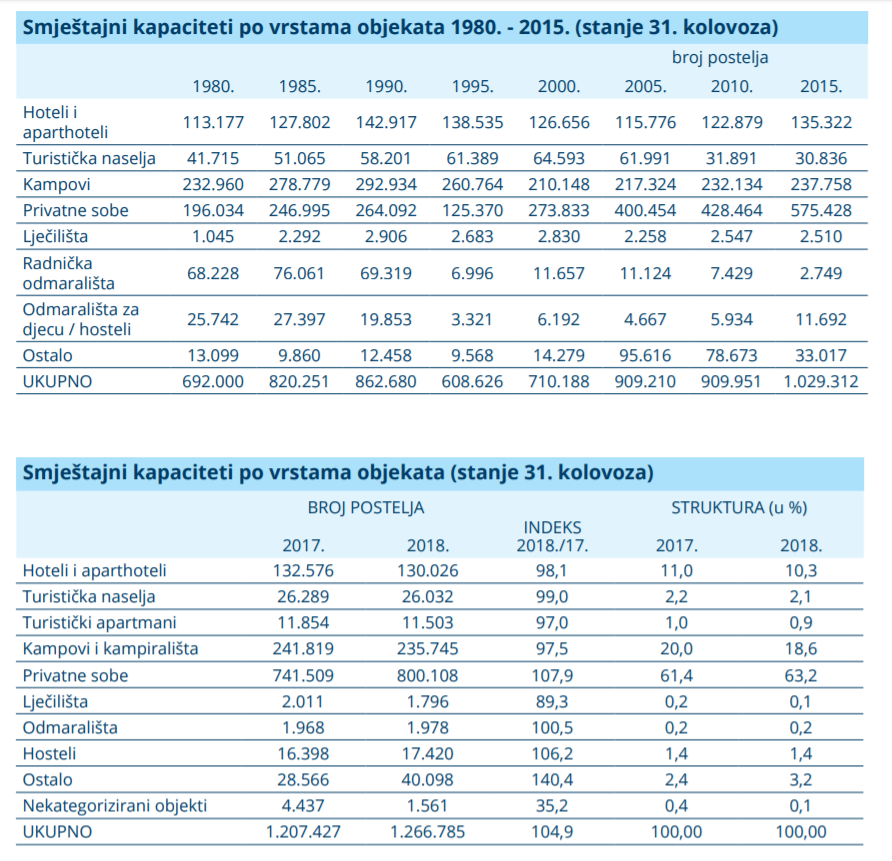
Whether they will or not, we will find out presumably once the Ministry of Tourism decides to stop restricting access to the transparent, award-winning real-time statistical reporting system, eVisitor.
But something does not quite feel right. All along the Croatian coast, locals are reporting smaller numbers of tourists and the roads in July were not that busy. The beloved official statistics should be available soon, but a snapshot of Jelsa on Hvar revealed some interesting points, and highlighted one of the major weaknesses of the policy of Statistics First, Tourism Second.
For in Minister Cappelli's Temple of Record Overnight Stays, one overnight stay of a Bosnian tourist on a half-board package on Hvar from just 166 kuna per night in July is the same as a guest renting a luxury villa and eating in Dubrovnik's finest restaurants.
Because when the measure of tourism is merely numbers and not quality, and All Overnight Stays are Equal in the Temple of Record Overnight Stays, the focus moves from filling up the beds at any cost (and if anyone is making money on 166 kuna a night half-board on Hvar in July - apart from the agency selling the package - I would like to meet them) rather than focusing on tourism. You can get a snapshot of analysis of the statistics within the statistics in this case study of Jelsa in Lies, Damned Lies and Croatian Statistics Said Mark Twain, Sort Of.
But what if all those precious overnight numbers going into the hallowed spreadsheets contained other people who were not tourists?
What if it could be shown that the main thing to decide on the success of a Croatian tourist season - the statistics - were inaccurate and were being bloated (not intentionally) by including people who were not tourists at all?
Foreign workers, for example.
As we have frequently documented on TCN, there is an ongoing crushing emigration in Croatia, as the nation's youngest and brightest talent, tired of the nepotism and lack of economic opportunity, move elsewhere in search of a better life. This has had a devastating effect on seasonal employment on the coast, for example, as the reliance on the traditional hard-working workforce in Slavonia is no longer there. Last year's waiter in Makarska now has a full-time job in Cork and is living much better.
In order to meet the need, more foreign workers - usually from Bosnia and Hercegovina and Serbia, but also from further afield - have been hired to plug the gaps. If a foreign worker has a contract, they will be counted as a worker. If they do not have a contract and are working illegally, they have to register and will be classified as being tourists as they are not working officially. Serbs can come for up to 90 days on a visit to Croatia. They must register their stay and enter into the system. If they don't, there will be problems at the border as they leave Croatia.
Nobody knows how many, but there are probably thousands of illegal seasonal workers in Croatia each year. Come for 3 months, earn some nice cash in the pocket, return to Belgrade. And you didn't even know you were being a tourist working that 12 hour shift.
With less Croatian workers available and more foreign workers arriving - many legally, many not - is there an additional rise in numbers at the Temple, because Croatia's tourism chiefs are actually counting many of its foreign seasonal workers as tourists?
Could it be that the crushing emigration is actually good for Croatian tourism - or more precisely, the Temple of Record Overnight Stays - as many of those coming to the coast from abroad to fill those jobs are doing so illegally and therefore being counted as tourists and adding numbers to the Temple of Record Overnight Stays?
And if the answer to that question is yes, that means that the main thing that Croatia is using to measure its tourism success - the hallowed spreadsheet - is totally unreliable.
And then what?
Little Luxury, Pricey Mass Tourism: TCN Interview with Tportal on Croatian Tourism
August 3, 2019 - Total Croatia News featured in a big article in Tportal today, entitled 'Crazy Englishman from Jelsa' - Guys, snap out of it, Croatia does not have a luxury tourism product and is too expensive for mass tourism. Here is what I suggest' by Damir Petranovic. An English translation.
Seventeen years after he first set foot on the island, the '’crazy Englishman from Jelsa’' - as the locals quickly took to calling him - has given this little Hvar town a real tourism strategy.
"Some Simple Steps to Improve the 2 Star Tourism Strategy in Jelsa on Hvar" is the title of an extensive article published on Bradbury's Total Croatia News (TCN) portal, which easily diagnosed the causes of stagnation and suggested a number of coherent and concrete proposals for a radical turnaround. In an interview with tportal, he explained what he wanted to achieve, but as now a great connoisseur of opportunities, he also addressed the possible implications at the national level.
This Brit has been known for many years as one of the best promoters of Croatian tourism, but at the same time one of the biggest critics of how it is being managed: among the most well-remembered are, let’s say, his devastating analysis of the ‘'Croatia 365’' project or the recent announcement that ‘’there would be no less tourists coming tomorrow if we abolished the Croatian National Tourist Board’’, Still, the positives prevail, and so Bradbury’s biography boasts a series of remarkable ventures.
Firstly, upon his arrival to Hvar, he issued the first complete tourist guide on the island, then realised that there was enough news there to launch a local portal, then on the same principle as Total Hvar, he launched Total Split, Total Inland Dalmatia, Total Zagreb and Total Dubrovnik, and finally Total Croatia News, named the most influential Croatian medium in the English language, affiliated with Google News. This was followed by the launch of portals specialised in cycling, wine and sailing, followed by the unofficial title of the most influential Croatian blogger, various workshops and entrepreneurial ventures. A few years ago, he moved to Varazdin.
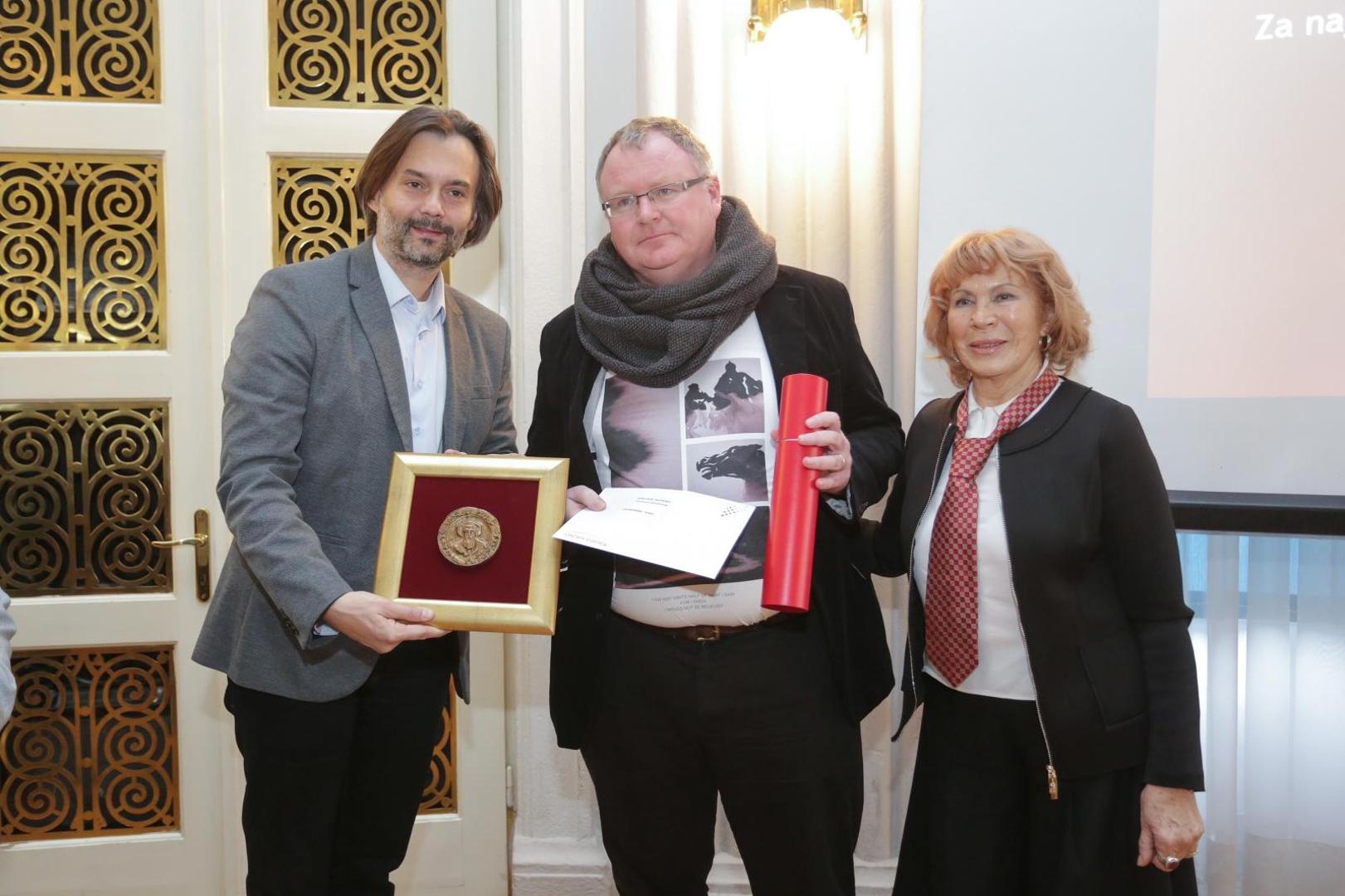
He is the only person to win the FIJET Marco Polo award at the National Society of Journalists twice – in 2014 for best international promotion of Croatia, and in 2017 for a feature on Advent in Zagreb – and he has been invited to submit his work on medical tourism to the inaugural Malaysia Healthcare Travel Council media awards in Kuala Lumpur later this month.
Bradbury, a man with a rich biography and over 90 travelled countries, ended up almost by accident in Croatia. He admits that he lived in a kind of bubble until he realised the meaning of the word '’uhljeb’', and from that period on, his observations were unavoidable reading for a better understanding of Croatian reality, while at the same time, his Facebook profile was both fun, sad, and educative. and instructive.
Just last month, he began posting short videos there from the July peak season in Jelsa. Snapshots of the half-empty town square were an overture to him in anticipation of the results of this year's tourism statistics, but also the basis for the great article mentioned in the introduction. In it, he referred to the ‘'all-inclusive'’ practice that has little or no benefit to the local community, excursion boat tours that bring thousands of tourists to Jelsa just to get ice cream there and look back confused because they have no idea how to fill those few hours, as well as today's unsuccessful branding of a place with exactly 108 years of organised tourism.
And then he suggested some concrete measures - from promoting Jelsa as the Dalmatian wine capital, organising sports events and optimising cooperation with neighbouring towns and islands, to, say, a concrete connection with a Norwegian town also called Jelsa. We will not retell Bradbury's theory, because the article is really worth reading (English version link at the top of this article, Croatian version here), like his suggestion for branding Croatia and improving tourism at the national level and resetting Croatian tourism - Branding Croatia: 5 Trends and Gifts to Focus On.
We therefore asked Bradbury to look at some other, related topics in a quick, layman-like way for tportal.
What are the reactions in Jelsa to this article?
I am not in Jelsa at the moment, so I can't really answer that question. Perhaps the most interesting response was a public one from the phenomenal Run Croatia project, who are very keen to work with Jelsa to initiate the first-ever Run Croatia Week. A great first step to restoring Jelsa's sporting traditions. The way that Run Croatia is expanding, having Jelsa as a flagship first destination for a Run Croatia Week could be the start of something beautiful. As you see below, they are only waiting for Jelsa's call to get started.
You mentioned a lawsuit from the Mayor – can you be more specific?
You will have to ask the Mayor. He chose to announce it in a public meeting in Vrboska a year ago. As I still haven't received the lawsuit, I am not sure what it is about.
What was the motivation for doing this kind of story?
My main motivation was sadness. Sad that such a lovely destination which has been so good to me over so many years is offering such poor tourism, and friends in the tourism business are suffering for no reason. As you can see from my article, my suggestions are not rocket science. They are simple to implement, cost mostly nothing, and will have a very positive effect as soon as next year. See Run Croatia above.
Is this problem specific for Jelsa, or can some of this advice be applied to Croatian tourism in general?
Yes, I think almost all of it can be applied elsewhere. There is nothing complicated in what I suggested, but sometimes it takes a foreign eye to give a different viewpoint. The big question is what does Croatian tourism offer on the coast? And the answer, sadly, is very little apart from the sun and the sea. And as we have seen with the weather this season, we can't even guarantee that now. Does Croatian tourism have a Plan B when climate change really kicks in?
What are your impressions of Croatian tourism in general – this season, and compared to 2002?
Everyone got really excited in the last few years as tourism was booming, as though it was due to some kind of strategic plan, and everyone was 'doing tourism' and making cash which meant to them handing over an apartment key and taking the cash. In reality, due to terror attacks and other circumstances, tourists to Egypt, Turkey, Tunisia, even Greece to a point, were looking for somewhere to go. Croatia couldn't lose. And did they try and see if they could win these guests for the long term? No. The prices were high, the service poor, and there was nothing to do apart from the sun and the sea. So when Turkey etc were safe once more, where do you think they went?
So Croatia can't compete in terms of price with these cheaper destinations in the mass tourism market which offer much better value. And it cannot compete at the luxury end, as there are no hotels (there are about 6 billion euro in blocked projects on the Adriatic). Check how many luxury hotel brands there are in tiny Montenegro (6 times less coastline, only 11 islands), for example, then check in Croatia.
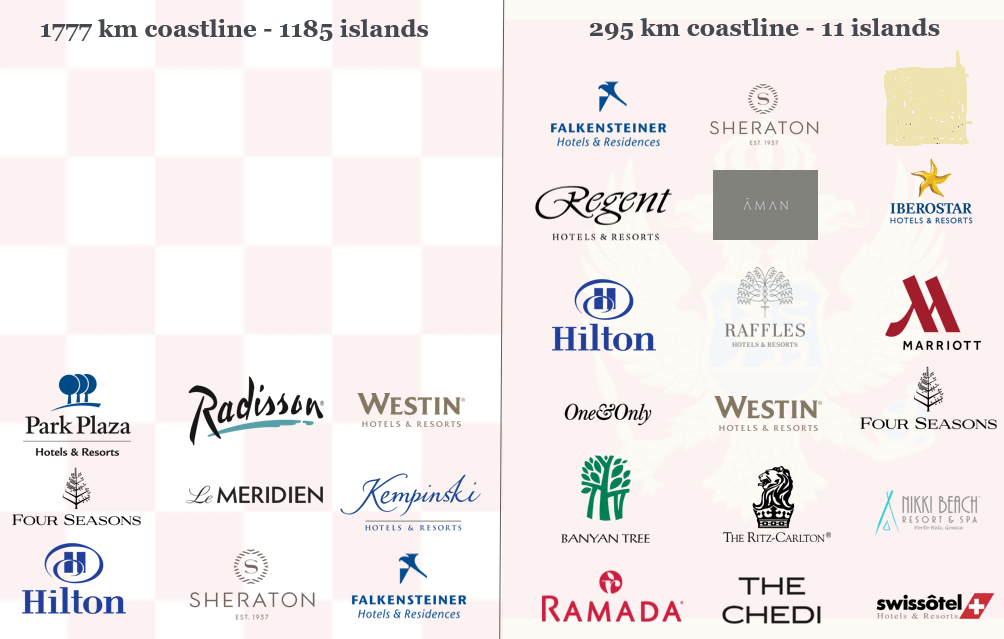
Business Insider researched luxury tourism providers to find out where the top 15 countries billionaires were visiting in 2019. Montenegro was in there, so was Rwanda. Croatia? Not a chance.
So in 2019, after years of being Full of Life, what is Croatia as a destination? Hardly anything to offer the luxury market, too expensive for the mass market. I think Istria is an exception to this, and tourism is working much better there. But there really is no brand, and no real offer, and it is expensive.
I have been doing a series of interviews on tourism businesses having record years in recent days to find out what they were doing. Vanja from Adriatic Travel Collection is doing incredible things in top luxury tourism in Croatia and I recommend her interview to your readers.
And I couldn't agree more with this sentence:
I am also tired of people who always complain. They have to start changing their offer, finding their niche. 80’s tourism is in the past and the majority are still offering just that, sun and sea. It is actually that simple.
I have never been one just to criticise without offering something constructive. I think Croatian tourism needs a complete reset, and here is how I would do it.
Jelsa in 2002? I obviously have a very romantic memory of that time, having just arrived and meeting my future wife in the Jelsa library, so it is hard to compare. But it seemed that locals tried harder with their tourists back then, that there were more relationships. Tourists were more loyal to destinations back then, these days it is all about the Instagram checklist.
Lately there was a lot of talk about the Croatian National Tourist Board, some people said it's useless an no one would notice if it was shut down. What is your opinion on that?
Well I gave an interview in the Croatian media last week which was read over 100,000 times called Brit who lives in Croatia: If the Croatian National Tourist Board was abolished tomorrow, there would be no fewer tourists. Maybe the title answers the question.
Where do you see Croatian tourism in the next few years?
It could be incredible, really incredible. Or it could be a worsening version of what we have today. As in every other section of Croatian society. I think we all know what the main problem in Croatia is.
Many international experts agree, for example, that Croatia could be in the top 10 in the world within 10 years for this lucrative, 12-month, and rapidly expanding medical tourism industry. If Croatia could gets its act together and the stakeholders unite. Learn more in Can Croatian Officials Unite to Exploit Huge Medical Tourism Opportunity?
But that is the story of every part of Croatian society. The system has to change, but will people get on the streets and demand change? They only get on the streets to celebrate football and heroes like Oliver. I suggested recently that we name a National Keyboard Warrior Offline Day, and get all our keyboard warrior heroes who spit hate and dissatisfaction to go offline for one day and all assemble in Zagreb and demand change. Haha, right, as though that might happen.
Lies, Damned Lies and Croatian Statistics Said Mark Twain, Kind Of
August 3, 2019 - A deeper look into the tourism statistics in Jelsa on Hvar points to the realities of season 2019 in Croatia beyond the headline numbers.
Statistics are such useful things. On the one hand, they can be used to track progress on things, while on the other, they can be interpreted in certain ways to fit a particular narrative.
And when - as is the case with the Croatian tourism chiefs - the powers that be decide that statistics (and their interpretation of them) will be the biggest barometer of success, then having control of public opinion of the interpretation of those statistics becomes crucial.
And so when the Ministry of Tourism decided to restrict access to the transparent, award-winning, real-time eVisitor statistics reporting system, I was not the only one who was suspicious that there was something 'going on.'
Some people think I am a tourism expert because I write a lot about Croatian tourism. I am not. I am a former male chambermaid turned wine merchant turned aid worker turned English teacher in Japan turned real estate agent turned writer. My first article published online was less than 8 years ago.
My understanding of Croatian tourism is still evolving, and I - like many others - was impressed at the growth of tourism in Croatia. Record number of tourists, record overnight stays. It was all good.
Or was it?
The overtourism debate in Dubrovnik started to spill over to other places on the coast, and somewhere along the way, the charm of the Dalmatian coast (I am referring mostly to the Adriatic coast here, and would also like to point out that little of this refers to Istria) seemed to be getting lost with an ever-increasing influx of tourists on the mainland. Were all these extra tourists a good thing, and were they actually spending to compensate for the inconvenience?
There has been a growing call in recent months for cruise ships to be limited, to have a general rethink on the tourism strategy. This mass tourism strategy is not healthy, and anyway Croatia cannot really compete with the likes of Turkey, Tunisia and Egypt, who are all now back in competition after recent terror attacks. And as there is a severe lack of quality hotels, luxury tourists are looking elsewhere.
But the statistics. If statistics are the thing you have decided to be judged on, then statistics you must deliver at any cost. The quality of the tourism has become less important than the statistics. If Minister Cappelli can announce that last year's record overnights of 106 million (54 million more than in 1990) has been exceeded, then he can officially declare the season a success and a vindication of his 'strategy.'
But is it? Is judging a tourist season by its arrivals and overnight stays the way to measure success? If we all worship at the Temple of Record Overnight Stays and feed it more and more overnights to make the temple bigger, is that what we call success? Or a strategy?
Statistics. As Mark Twain famously wrote, there are lies, damned lies and statistics. Let's take a closer look.
As readers of TCN will know, I have been following the season very closely in my adopted hometown of Jelsa on Hvar this summer. I felt saddened enough by the low-quality tourism that this lovely town is now enduring, while at the same time enjoying a lovely summer - the empty Jelsa of summer 2019 is as nice as I have known it. And if you have not booked a holiday yet, then come! There are some great offers for an affordable holiday, as we will discover below.
The statistics for the 2019 season to the end of July are now finally available, so let's dive in to see how Jelsa is doing, as it seemed so empty in July. And remember, statistics can be interpreted to suit any narrative.
The first surprise in such a seemingly empty destination is that tourist arrivals are actually UP! By 1.44% compared to this time last year. Is this the World Cup dividend finally coming to light?
But then, if you wanted to write a negative narrative, you could say that the overnight stays were down 0.91%
Either way, this is a good season, isn't it? What the hell is that fat, pink Brit complaining about?
Here are the arrivals and overnight stays by country for the first 7 months. In Minister Cappelli's Kingdom of Accidental Tourism, All Overnight Stays are Equal.
As a foreign fly on the wall, I beg to differ. I think that overnight stays from countries who are also going to spend in the bars, restaurants and on tours are worth more than those bringing their own food and drink and looking for the cheapest option to have their summer holiday on the beach. But he is the minister and I am just a blogger, so what would I know.
If we look at the overnights so far, the only countries which are up are from Eastern Europe (big welcome to our friends from Ukraine, up 177%). If we look at who is down, we have Austria (-20%), Norway (-19%), UK (-12%), Italy (-14%). The higher spending East Europeans are also down (Poland and Serbia - 10%).
Not great news for the restaurants.
These are the numbers for July, the month I was documenting - while Norway was down almost 30%, Bosnia was up 12%. We will figure out why in a moment.
If we look at the hotels in Jelsa, they are having a great season - at least the main two are - 15% more arrivals than last year. Great news for Minister Cappelli's spreadsheet.
So who is staying in the hotels, and where are the biggest increases coming from? Ukraine (269% on overnight stays), Slovenia (30%) and Bosnia (20%). It is nice to see that there are 13% more Croatians in Jelsa this year - many complain that the coast is too expensive for them these days, especially islands such as Hvar. So why the big increases in the hotels from places like Bosnia and Ukraine, for example?
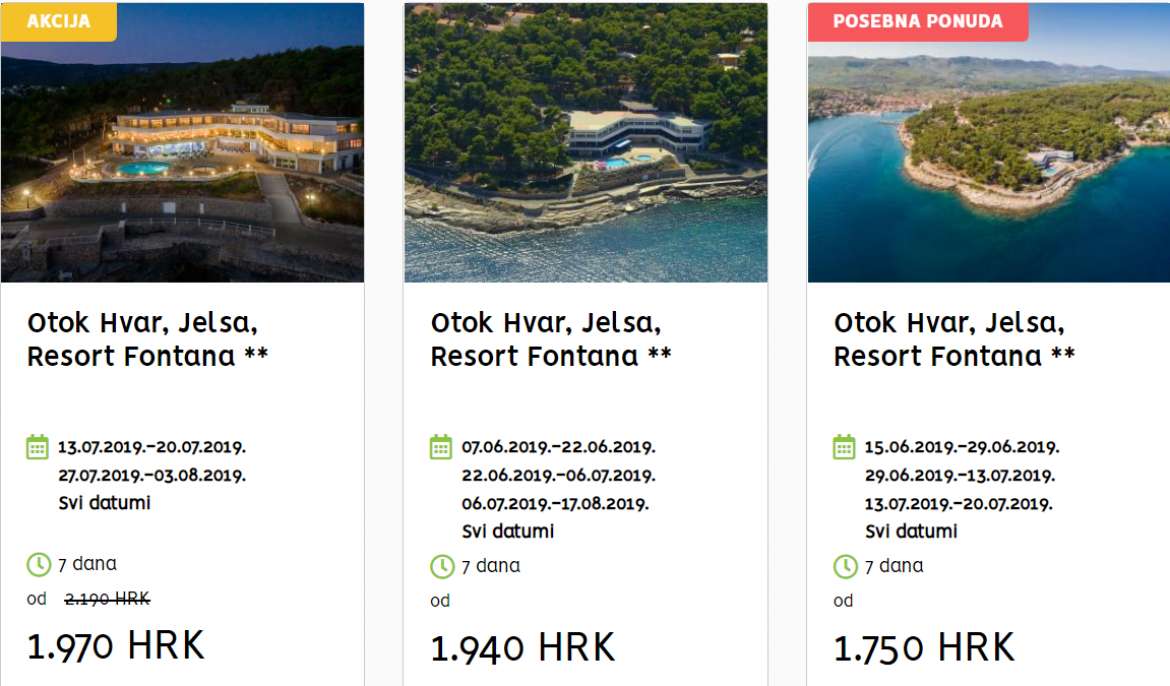
Could it be something to do with price, perhaps? An example of some of the offers for Jelsa hotels being discounted already this summer. In the cheapest offer of them all (available for the first three weeks of July), 2 adults (1,750 kuna each) and one child under 12 (free) could have a week in a hotel room close to the sea and a great beach, with breakfast and dinner, free WiFi and parking for just 3,500 kuna inclusive.
Or 166 kuna per day per person.
That includes the agency fee, taxes, running costs, and all the rest.
Expensive Hvar? Never was it so affordable! We live 100 metres from the hotel and only half-jokingly talked about moving in for a week to save money. A REALLY good value holiday, and with such an excellent beach and everything in the hotel, no need to go and spend downtown. Perhaps on an ice cream for the little one.
In Minister Cappelli's Temple of Record Overnights, All Overnights are Equal.
And just in case you are cursing yourself for missing out on such a bargain, relax. There is still time. It will cost you 39 kuna a day extra now in August, but that family of three can enjoy magical Jelsa for just 205 kuna a day. Book here. 21 more overnights for the hallowed spreadsheet.
How is it going in private accommodation? Up with East Europeans, down with Germany, Austria and Norway.
Camping has always been one of Jelsa's accommodation strong points. With several camps within walking distance of the catamaran, it is the perfect place for camping tourists to base themselves when coming to Hvar.
Not this year.
Perhaps the most surprising - and alarming - statistics are in this table.
After 108 years of tourism in the town, nobody still has any idea what Jelsa's brand is. Most people talk about it being a family destination. More a destination for old people and teenagers these days it seems, rather than young families and parents aged 25-44.
So what have we learned?
Jelsa is extremely good value, with bed, breakfast and dinner available even today from 205 kuna per person per day. Tourists from the region are taking advantage of those offers and then staying within the hotels, while the traditional higher-spending guests from places like Germany, Austria and Norway are going elsewhere, which is leaving the restaurants and the town considerably emptier.
It is the worst kind of tourism Jelsa could have, but Minister Cappelli will be able to preach from the pulpit at the Temple of Record Overnight Stays about how well Croatian tourism is doing.
Just make sure you don't ask him to explain the World Cup tourism dividend.
In this era of manipulated information, some will cry Fake News. Others will not believe something unless they see it. A quote from my recent blueprint to improve Jelsa tourism, Some Simple Steps to Improve Jelsa's 2-Star Tourism Strategy on Hvar.
I posted quite a few of these on my Facebook wall (apologies to my FB friends) because I wanted to document the reality when the inevitable will happen when the statistics are announced. We will be blinded by science and spreadsheets about numbers and overnights. Those Ukranian 21 overnights will cover up the real situation to save some ministerial embarrassment. As the hotels are filling with low-cost half-board tourists, the restaurants are complaining that the higher-spending guests, such as Norwegians, are a lot less this year. Does 21 Ukrainian half-board overnights equal 21 Norwegians in private accommodation and eating in the restaurants and drinking in the bars? For the spreadsheets, they are the same. For tourism revenue to Jelsa businesses, I would put the ratio at 21:3.
For the more visual types, a selection of videos of Jelsa's tourist season in July, shot at different times of the day. I am sure Minister Cappelli can only see packed tables and a main square Full of Life.
July 8, 2019. 19:25
July 8, 2019. 20:45
July 8, 2019. 22:00
Jelsa, 18:45, July 13
19:45, July 13
21:00, July 13
21:45, July 13
July 16, 2019, 20:35
July 16, 22:55
July 20, 12:30
July 20, 12:40
July 20, 19:10
July 20, 2019 at 21:00
July 21, 20:30
July 21, 20:40
July 21, 22:40
July 22, 19:35
French Tourists Should be Targeted to Extend Season, Says HTZ France
France has seen a steady increase in visitors to Croatia in recent years, at an annual difference of between 5-10 percent. This year is no different, with 300,000 arrivals and more than a million overnights in the first seven months, which is up 6 percent from the same period last year, says HTZ France.
As Goran Rihelj of HRTurizam writes on July 30, 2019, the positive trend continued in July, with French tourists making 121,000 arrivals and 477,000 overnight stays, which is up 7 percent on arrivals and 10 percent on overnight stays compared to July last year.
"We are extremely pleased with the positive impressions of the French who, upon their return from Croatia, emphasize our hospitality and authenticity, preserved nature, beautiful coastline and islands, quality gastronomy and rich cultural heritage. The results achieved are even more significant if we consider that the French market is very complex, primarily because of their well-known trend of staying and spending their holidays in French destinations, that is, the strong promotion of domestic tourism,” said Danijela Mihalić Đurica, Director of the HTZ Office in France. Đurica added that French guests are ideal for extending the season precisely because of their many school holidays, national holidays and public holidays and on average a shorter working week.
Most French tour operators are delighted with the bookings and results, especially for July and August, but also for September and October, the HTZ said.
This is confirmed by the statistics of the Association of French Travel Agencies Les Entreprises du Voyage, according to which Croatia ranks fourth in the list of France's top-selling foreign mid-range destinations, which is up 11 percent compared to the same period last year.
Thus, the proportion of French travelers organizing their holidays abroad using travel agency services this year has increased by 4% for long-haul destinations and 2% for medium-haul destinations, representing more than 3/4 of their summer vacation.
Interestingly, according to a report from Les Entreprises du Voyage, Turkey, which was a hit last year, returned to normal visitation levels, with Tunisia and Egypt reaching visitation levels before the "Arab Spring". These destinations are returning to the detriment of European destinations such as Spain, Greece, Italy, and Portugal. Otherwise, Turkey expects to achieve 50 million arrivals this year.
When it comes to longer stays, although the US and Canada lead, the French prefer seaside holidays: the Dominican Republic, Mauritius, and Mexico are the top three French destinations when it comes to longer trips.
“Active tourism, nature, culture, and gastronomy are certainly motives with which we can interest guests from France, especially in the pre and postseason. Otherwise, the French are known as the world champions in using their holidays and number of days off. Every seven weeks, French schoolchildren have two weeks of school holidays. That means they have two weeks off in April and two in October. Also, these are not guests who will be comfortable with lying on the beach and the sun and sea; they are extremely curious. They need a little more effort because they are very aware of the value for money,” Mihalić Đurica pointed out.
In announcing this tourist season, Mihalić Đurica revealed that Dubrovnik had been the most popular destination in Croatia for French guests for decades, and now Split is becoming more and more popular. Furthermore, French guests are increasing in numbers to Kvarner, Istria, and Zagreb.
"Positive trends from the French market are the result of expanding the offer and numerous promotional activities and quality cooperation with partners such as Ovoyages, Travel Europe, Top of Travel and Voyamar, which offer Croatian destinations, and every year new charter flights and direct flights to Split, Pula, Dubrovnik, and Rijeka are introduced from, for example, Lyon, Marseilles and Bordeaux,” said HTZ Director Kristjan Staničić, adding that he is especially looking forward to a continuous increase in the turnover of French guests, not only in traditionally strong destinations such as Dubrovnik or Split, but also in new ones like Zagreb, Slavonia, Kvarner and Istria.
The publications in the most prominent French media with a focus on Croatia's continental also contribute to the positive results.
In Vukovar-Srijem County, the famous culinary show "Cuisine impossible" was successfully filmed, and a report about Slavonia is expected to be published in one of the most read French magazines Le Figaro. On the national television station TF1, last week's "Croatian Week" broadcasts reported on Krka National Park, Šibenik, Korčula, Hvar, Split, and Dubrovnik.
And finally, the national TV station France 2 saw more than 17 million viewers during a four-week promotional video about Croatia, concluded the HTZ.
To read more about travel in Croatia, follow TCN’s dedicated page.
Is Anyone Having a Record Tourism Season in Croatia? Oh, Yes - Vanja from Adriatic Travel Collection
July 31, 2019 - As the Ministry of Tourism restricts access to the transparent and award-winning eVisitor statistics system and last available statistics pointing to another record season, many destinations are reporting the exact opposite. So is anyone having a record season in Croatia? Meet Vanja Jelic Stjepovic from Adriatic Travel Collection.
A few days ago, I posted on my Facebook wall that I was looking for any tourism businesses who were indeed having a record season to be featured on TCN. Although it is the peak season and people were busy, I was expecting a few replies. I have received just two replies, which you can read below (the offer is still open, details at the bottom of this article). The first interview I did with Ante Lacman of Hvar Tours caused plenty of discussion in certain circles. This was followed by a success story from the sailboats - Chris Tabone from Koda Sail.
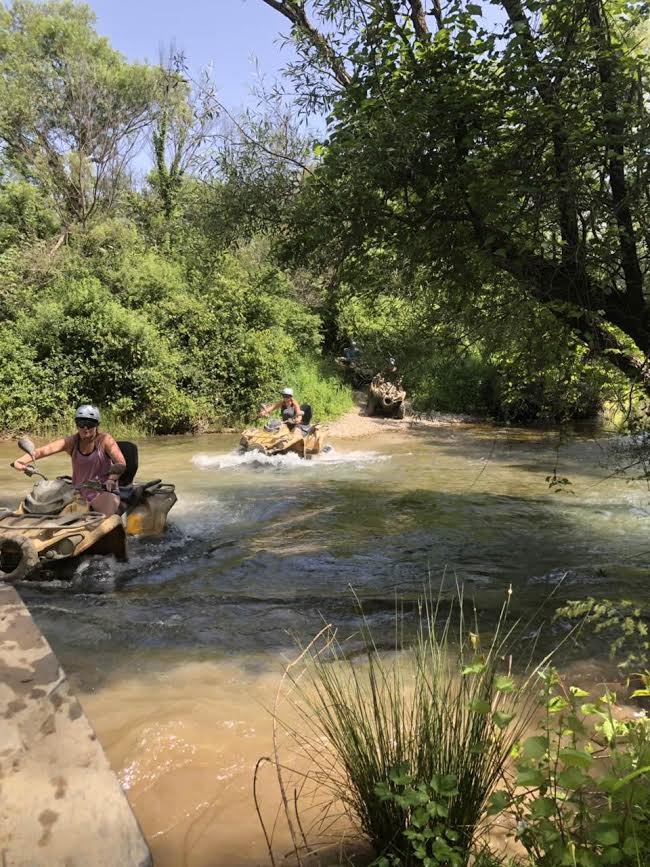
Next up, a really brilliant interview for the luxury tourism sector based in Dubrovnik, Vanja Jelic from Adriatic Travel Collection.
Tell us a bit about your business and what you do.
Located in the heart of Dubrovnik, one of the treasures of Croatia, Adriatic Travel Collection boasts more than 15 years of in-country experience crafting high-quality, bespoke itineraries from family tours to romantic escapes, ensuring seamless and memorable journeys. We provide complete incoming services to respectable clients from all over the world. However, I must stress that our main market is the Northern American Luxury Market. With our extensive local destination knowledge, we help our clients discover the Adriatic’s extraordinary places. The destinations in our portfolio are as diverse as the geography that defines them - from the hilltop towns and country estates of Istria to the fishing ports and island villages of Dalmatia - reflecting singular lifestyles where history, nature, food and wine take precedence.
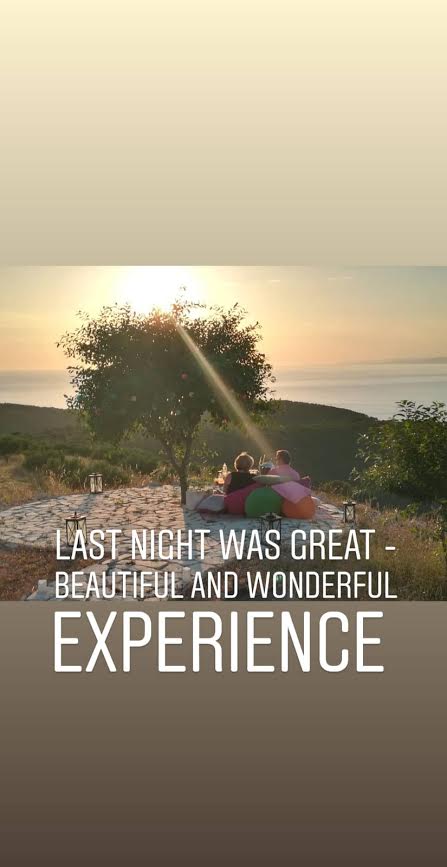
Our core business are the individuals and small groups where we can really pay attention to every single detail during their trip and sometimes the list of details can be really long, trust me.
Delicious food, charming hotels, stunning architecture, great nature, scenic landscapes, friendly people and a multitude of history and culture await them. They will relax in carefully selected hotels that are centrally located and offer the best service. Meet our local guides, who have been living in their cities their whole lives and know each corner, and who will show them all the hidden gems of the real Croatia. As we are a small team, we have invested in technology, so all our savvy clients have a mobile-friendly app with their itineraries with them. These apps allow us to communicate with the clients on a non-stop basis which makes them feel secure and in good hands.
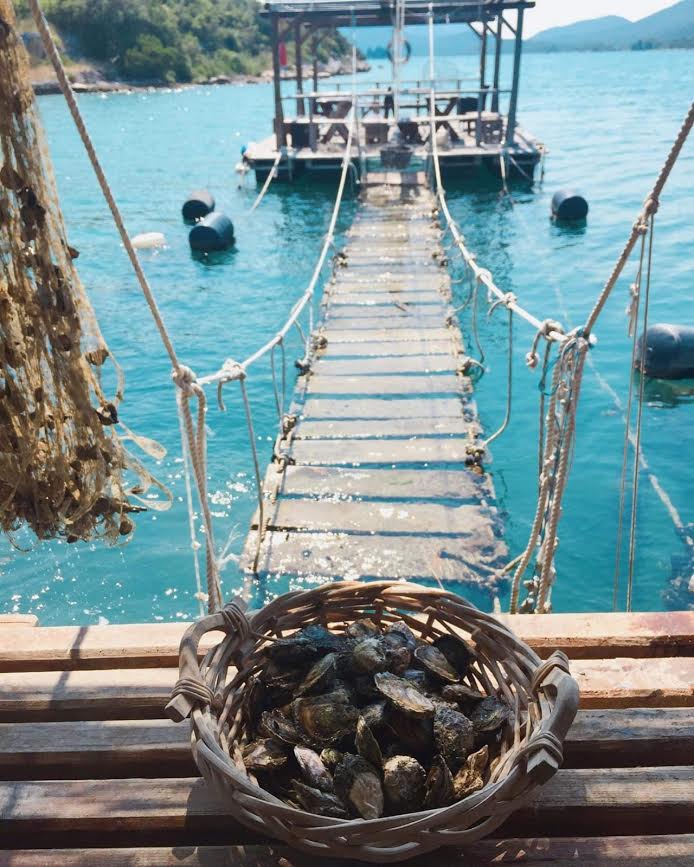
Lots of people are complaining about a terrible season - how is it for you?
This season has been great for us, actually our best season so far. Next one should be even better. As the planning for our trips starts way before the new year, by the time it was only January we felt snowed under emails for 2019 season trips.
Luxury travel still tries to be planned ahead of time, in order to secure the best rooms with the best views, best local guides and tables for two in the most acknowledged Croatian restaurants. However the trend of last-minute bookings has affected luxury travel too, but by building long-lasting relationships on the ground, we pull together those itineraries in the same way as we pull the long-planned ones too. In the end, it is all about those relationships. No matter how hard we planned and how much time we invested in a booking, in the end, the clients see our guides and drivers and skippers who are delivering magic to them. Those are the people we should be investing in, they are the best ambassadors of Croatia.
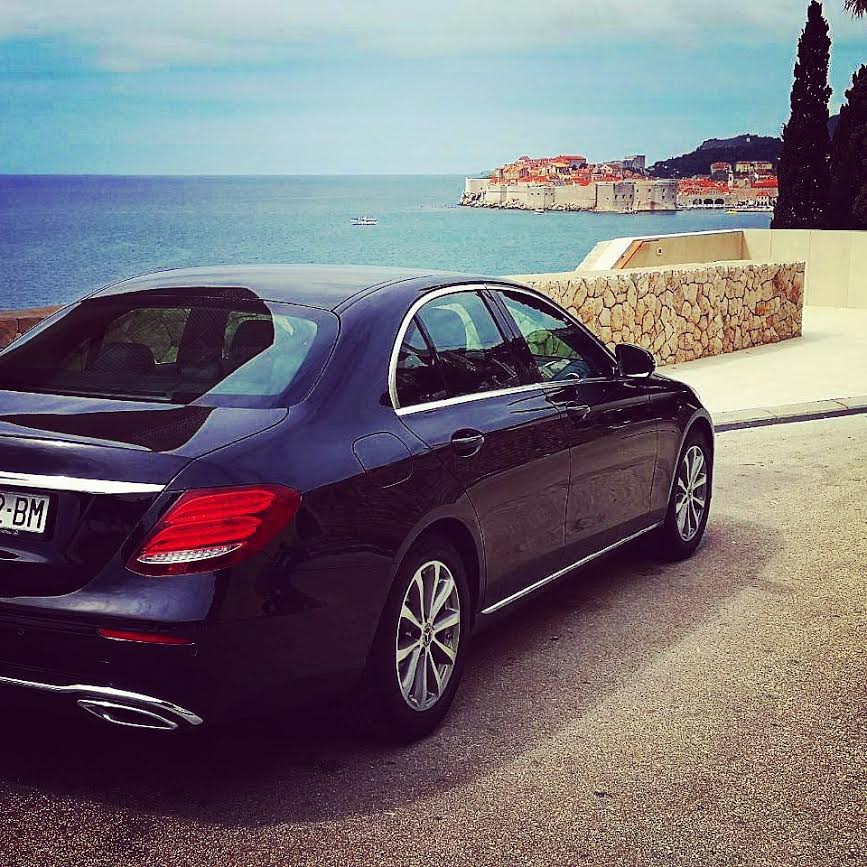
Furthermore, it also helps that we are all born and raised in Croatia and we know the people or we know the people who know the people. Our clients like to feel special, so when the cook comes out and says hello in the best Dubrovnik restaurant, it means a lot to them. Agents we work with are top-end luxury travel advisors in North America and they claim Croatia is on fire. Even it looks to us that we are overcrowded and that everybody knows about Croatia, the luxury travel market is still evolving and has huge potential, which is growing from year to year. We try to pamper both our agents and their clients while in the country to the maximum level so both of them feel completely secure in the knowledge that this is the best trip of a lifetime. Our biggest compliments are the referral bookings that we are getting as the clients are just raving about about the services, country experiences they had on their trips.
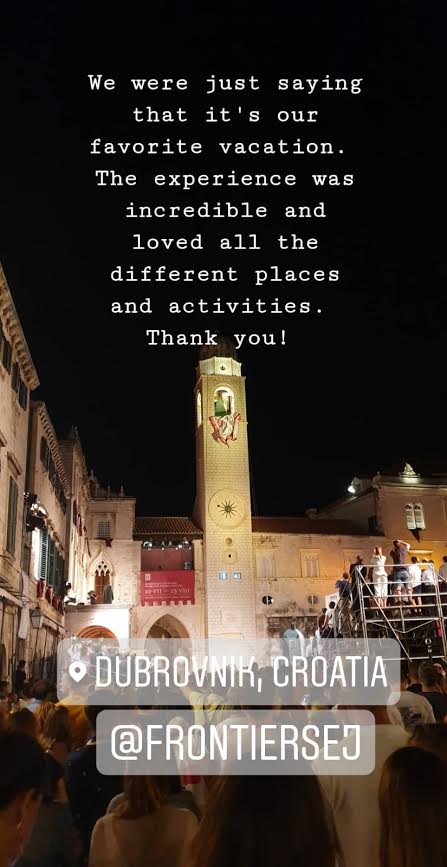
What services, in particular, are proving popular?
In our world, the most popular services are the most private, tailor-made itineraries created for each specific need of our clients. They are all different and come with a different set of expectations.¸ Working exclusively with travel professionals, we as travel “composers” apply true artistry in creating custom private journeys, shore excursions, and yacht and gullet charters.
With our guidance and assistance, travellers can learn more, go further, and get closer to the highlights of our amazing country. Our programs include private custom museum visits, UNESCO World Heritage Sites expert sightseeing, cookery classes on country estates, wine and olive oil tours, truffle-hunting, oyster harvesting, private sailing and yachting trips, heli rides, romantic dinners, private opera concerts, nature and city walks, first-class restaurant reservations etc.
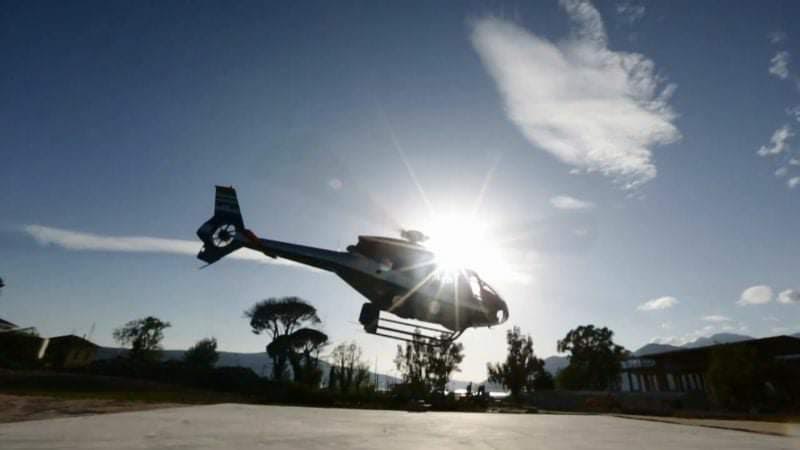
Our clients have a short time to discover Croatia which is mostly 7 to 10 days. Within the prescribed time frame they do want to see it all, as for the majority of them this is the first time in Croatia. We need to know their preferences and fit them to make the most memorable experience.
Out of all the programs that we deliver I would like to stress out 2 which have proved to be the most popular ones as are covering the most and are best for 1st in Croatia.
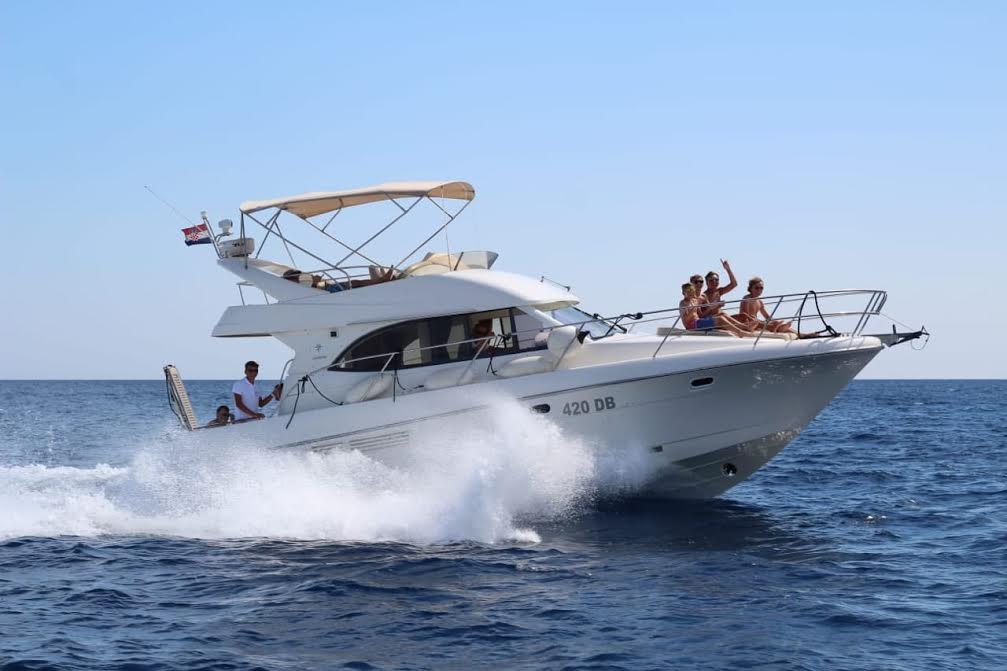
The best of Adriatic
There is no better way to experience Croatia than by private motor yacht, exploring the most expansive Mediterranean coastline, spending a night in different ports such as Hvar, Brac or Korcula. There are over a thousand Croatian islands waiting to be discovered. The small towns and ports, gently rolling hills, spectacular beaches and coves, lush vineyards, and vibrant nightlife make it the perfect island getaway. If you add a couple of nights in Split beforehand and end in Dubrovnik, this certainly makes a trip to remember. Our local supplier is investing in their portfolio so the number of exclusive yachts is increasing. Adriatic Travel Collection has exclusive charter options with the flexibility to opt for a 3, 5 or 7-day private cruise starting in either Split or Dubrovnik.
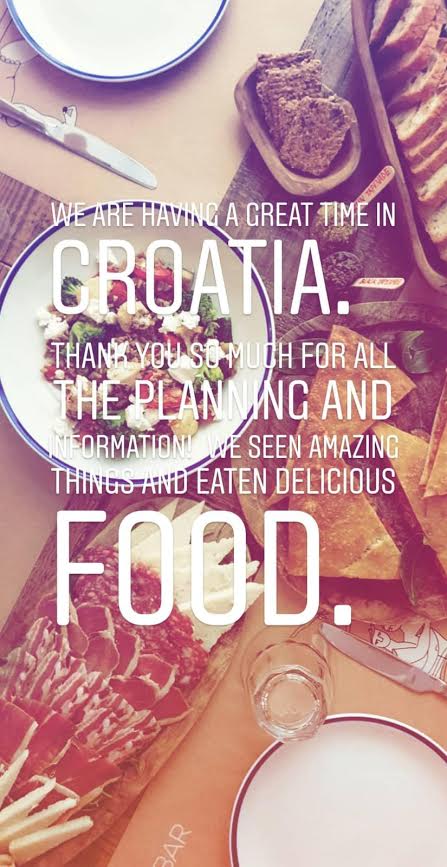
Highlights of Croatia is our second GO TO program especially popular in the pre and postseason when the swimming is not the priority for the trip, where our clients try to sense the best of Croatia. In just a week, with plenty of elegance, they will discover major highlights of our amazing country starting in Zagreb, Plitvice, Split, and Dubrovnik. They will walk the upper town of Zagreb, hike around the Plitvice lakes to escape the crowds, go to afternoon visit to Diocletian Palace followed by a great dinner in one of the local places, have private oyster tasting on the islet in front of Ston, have an early morning Stradun walk, then around the city walls.
And indulge in as much as they can from our culture.
You can learn more about these itineraries here.
Why do you think so many people are complaining?
I have personally been in travel since 2004 starting back in Atlas when this was still a major Croatia DMC, working my way through Abercrombie and Kent, which is the most luxurious tour operator in the world, to starting my own business in 2012 and I'm really sick and tired of the statistics. Actually wrong statistics that prove nothing but the number of people who came to Croatia. I am also tired of people who always complain. They have to start changing their offer, finding their niche. 80’s tourism is in the past and the majority are still offering just that, sun and sea. It is actually that simple.
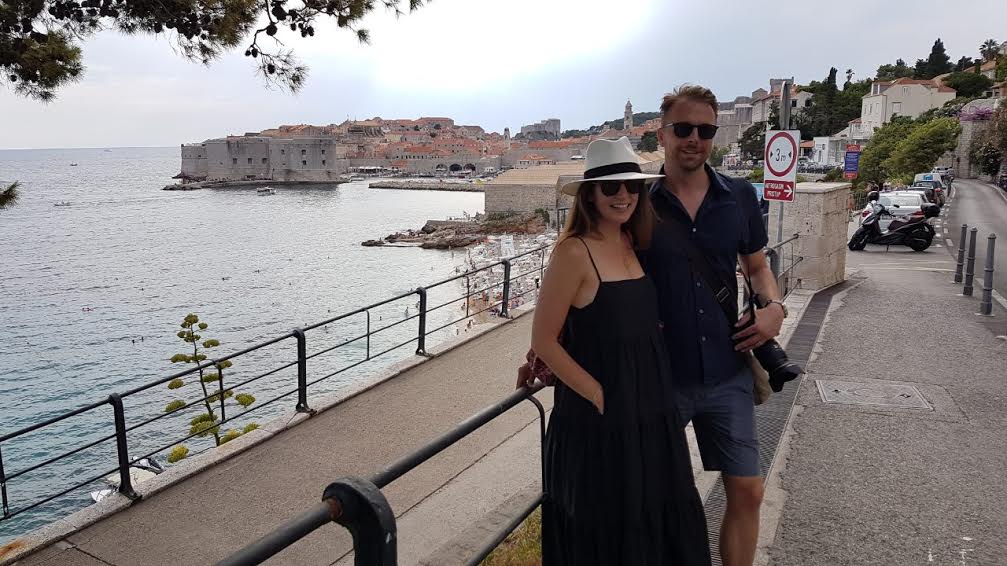
Are you happy with the direction of Croatian tourism? What would you improve?
As I specialize in luxury travel this is the only segment I will be talking about and as in every aspect, there is still huge room for improvement. We strongly miss the big hotel brand names that stand behind their level of service and have their loyal customers. The luxury marinas are also heavily missed. I am just afraid that we have lost the opportunity while our neighbors took advantage. We should make it easier for foreign investments.
On the other hand, there are some very positive stories, such as Stories, the Croatian luxury hotel brand, where the small local properties are trying to position themselves on the market and are doing a great job. You have some small properties that are fully booked for months in advance. Instagram is raving about them.
Furthermore, even though it sounds a cliché, we need to figure out how to do year-round tourism. Italy does not have just a summer season, right? And yet we share the same climate and culture... so it just about us then how to position it. We need to get more flights in the winter season. The new American Airlines direct flight is for sure something positive, let's hope in 2020 it will be longer.
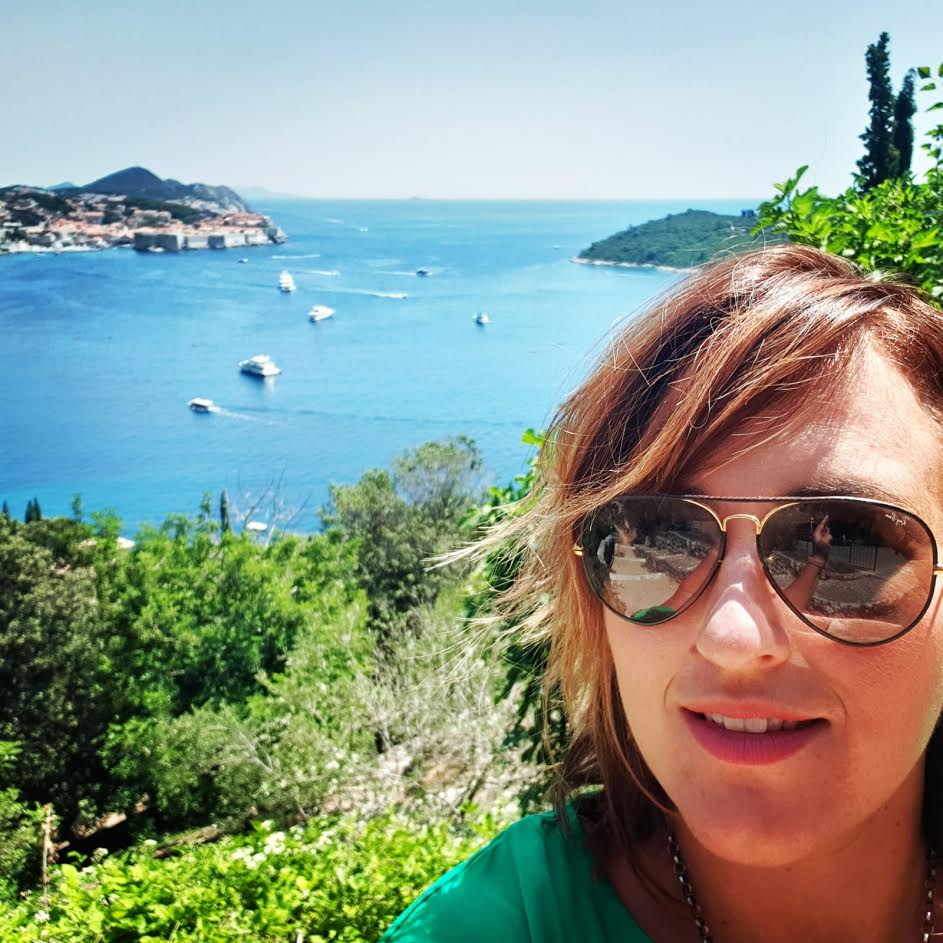
To learn more about Adriatic Travel Collection and their services, check out the official website.
Is Anyone Having a Record Tourism Season in Croatia? Oh, Yes - Chris from Koda Sail
July 26, 2019 - As the Ministry of Tourism restricts access to the transparent and award-winning eVisitor statistics system and last available statistics pointing to another record season, many destinations are reporting the exact opposite. So is anyone having a record season in Croatia? Meet Chris from Koda Sail.
A few days ago, I posted on my Facebook wall that I was looking for any tourism businesses who were indeed having a record season to be featured on TCN. Although it is the peak season and people were busy, I was expecting a few replies. I have received just two replies, which you can read below (the offer is still open, details at the bottom of this article). The first interview I did with Ante Lacman of Hvar Tours caused plenty of discussion in certain circles.
And for the second, we head to the sailboats of the Adriatic to find out how Chris Tabone of Koda Sail is enjoying his summer.
My name is Chris Tabone. Australian from Melbourne, with Maltese heritage. 39 years old, married with a 6-month-old son.
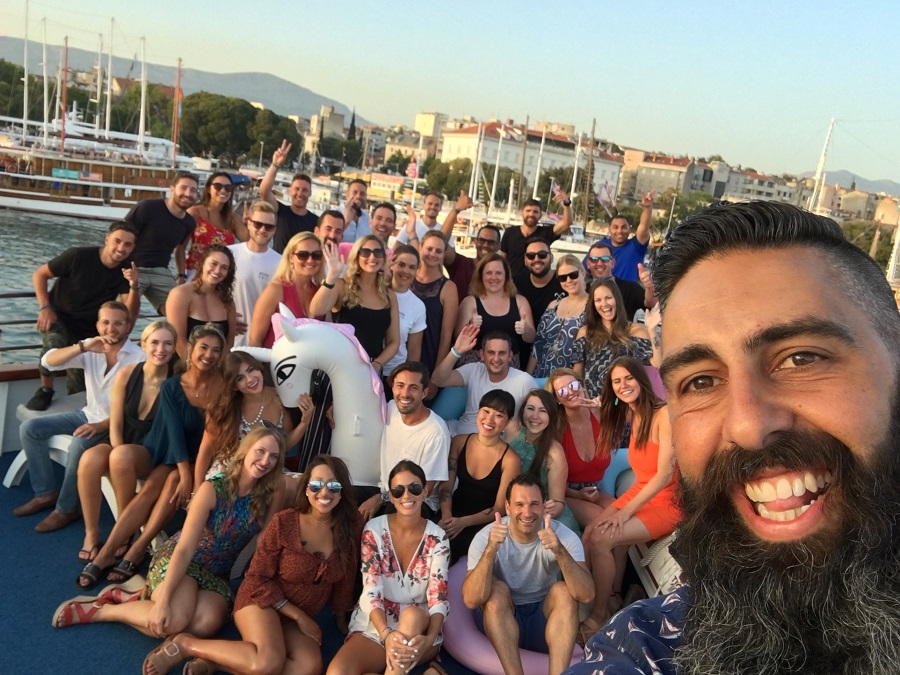
I believe there has been a shift in tourism here in Croatia. The travellers are wanting different things so you have to keep it fresh. I've been working in Europe for almost 10 years now and see some companies still doing the same thing I saw them do way back then.
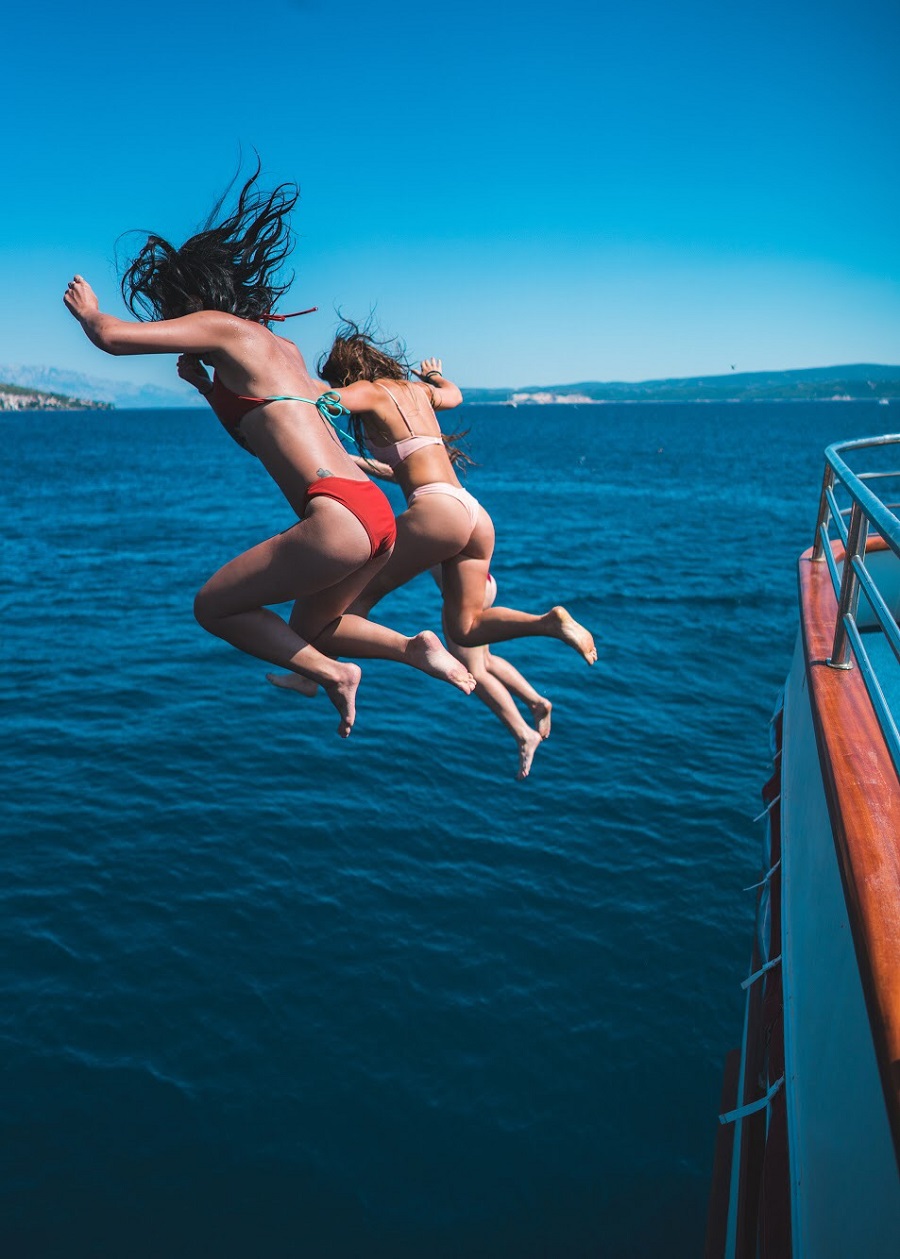
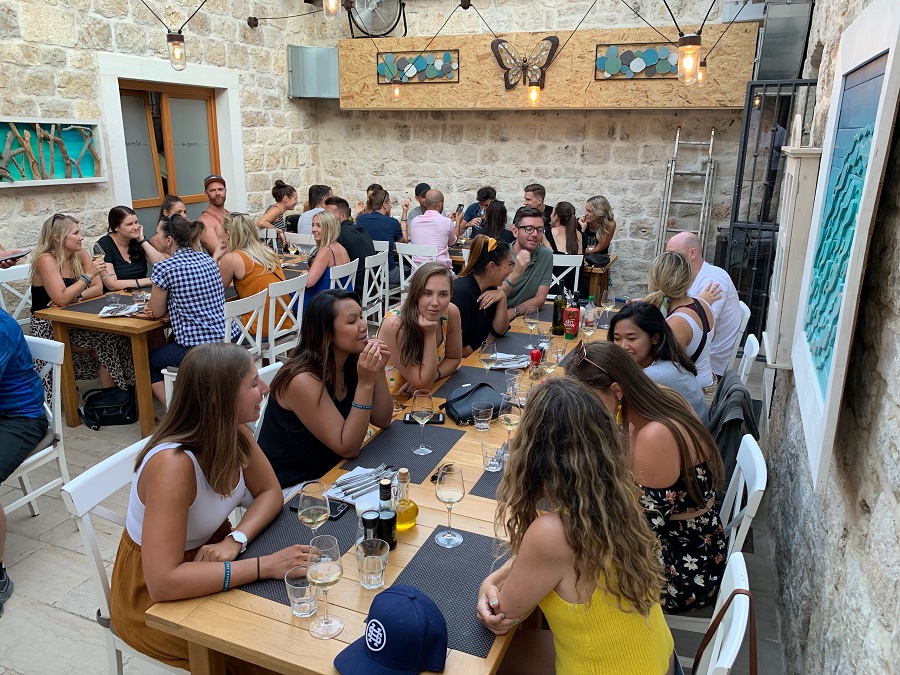
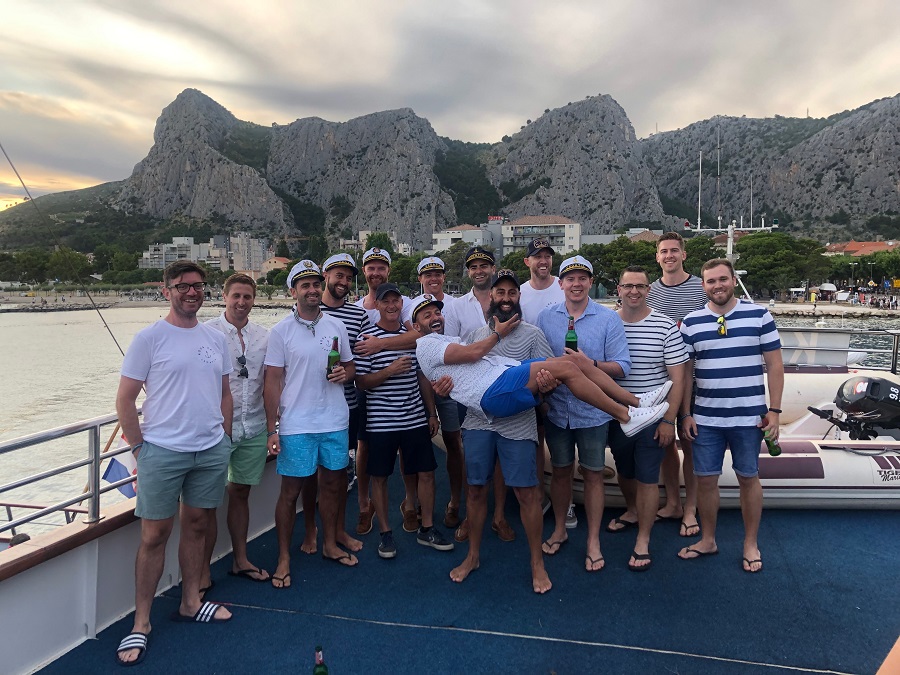
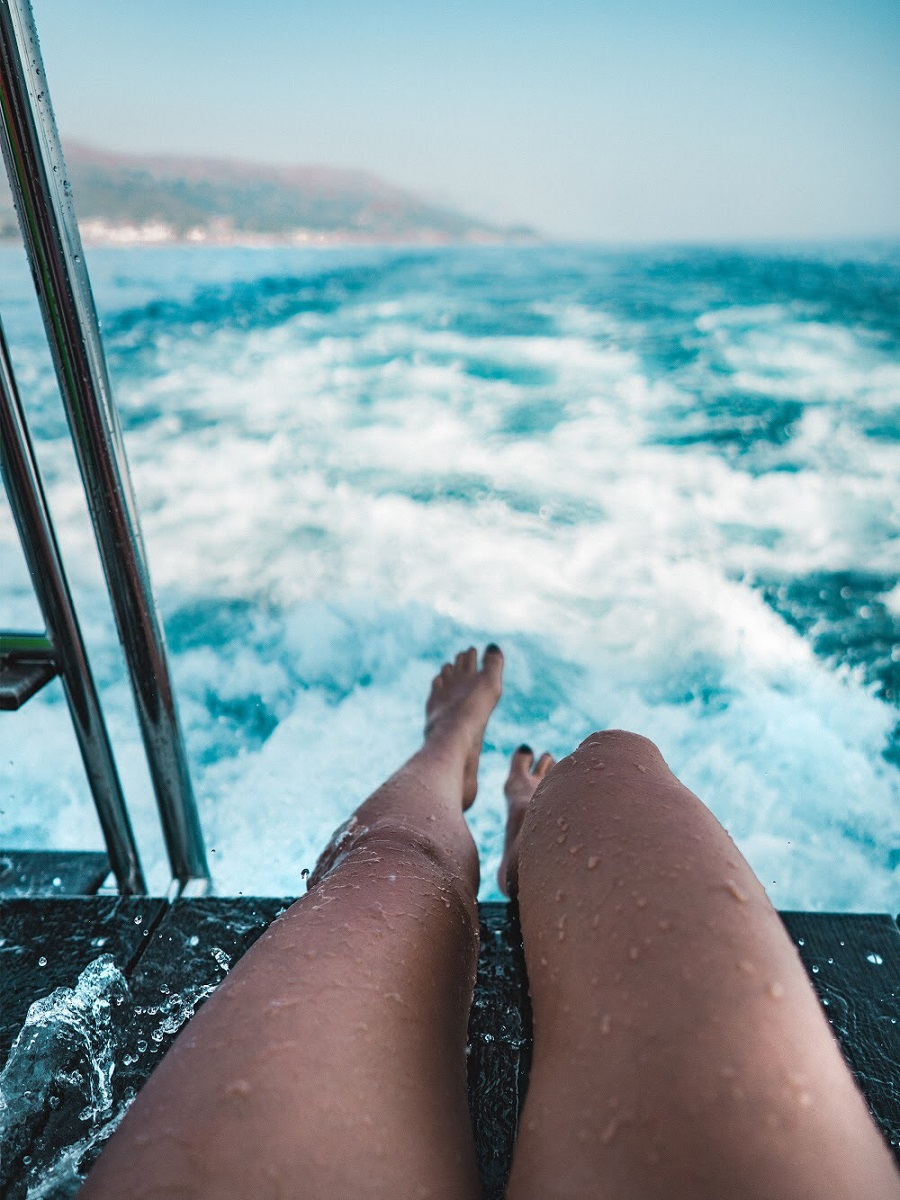
Overall I think Croatian tourism is great. I've been lucky enough to really get to know the locals and see year after year how tourism has continually changed. It's a country that has so much to offer for the tourist and the people here are passionate about their home.
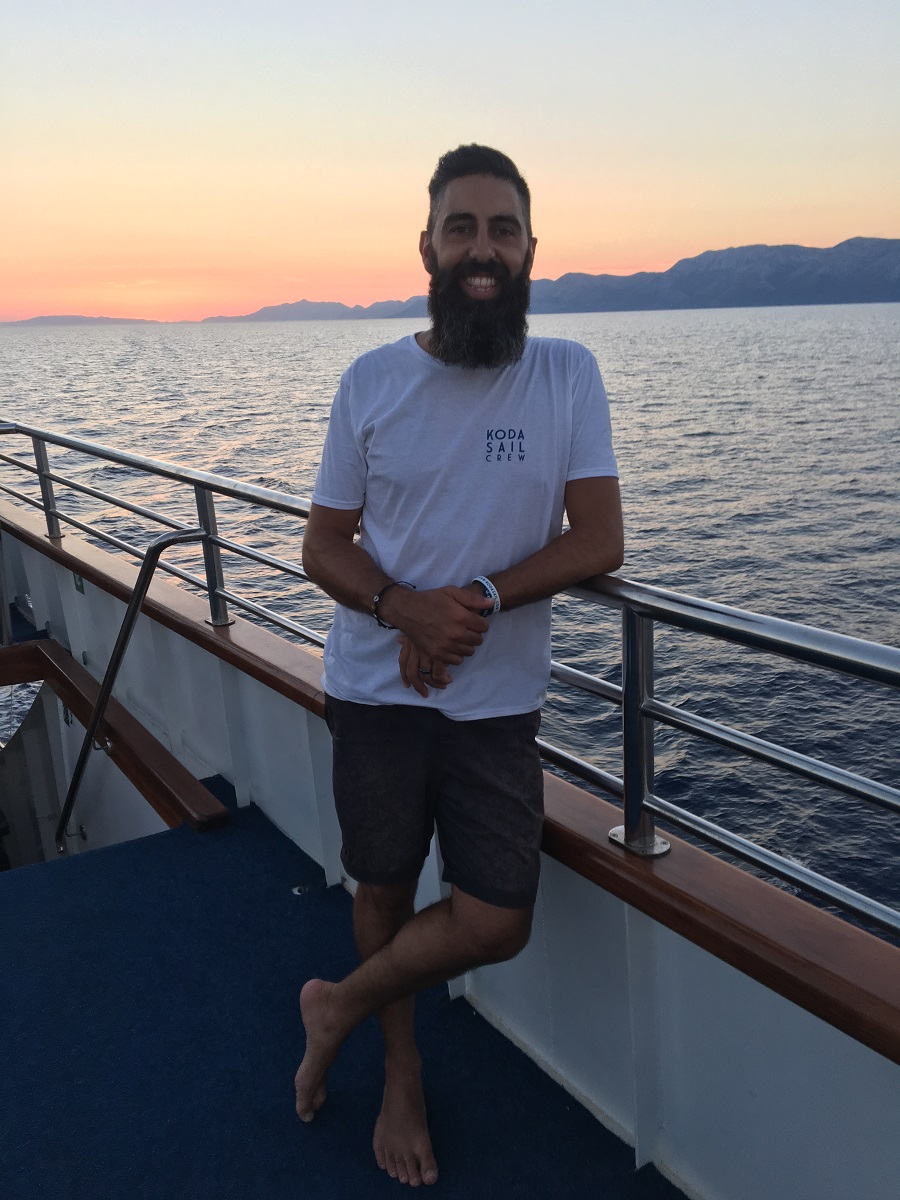
How Croatia Should Use Its World Cup Gift: It is Not Rocket Science
July 30, 2019 - As Croatian tourism has totally squandered the World Cup gift of the heroics of Russia last summer, here is how to resurrect it.
Just over four years ago, I had no idea what a YouTuber was. Three days later, not only had I made the dreams of the granddaughter of some very dear Munich friends come true, but an idea of mine was central to the most viewed Hvar video of all time - some 4.4 million views and counting (you are welcome).
When I realised the huge promotional potential of YouTubers Joe Sugg and Oli White, I tracked them down and they kindly agreed to an interview for Total Hvar, which took place at Restaurant Gariful. After the interview, I showed them the underwater aquarium where Gariful keeps its lobster, and there also happened to be a baby shark.
"Joe Sugg and Oli White swimming with sharks. Isn't that the sort of thing your fans would love?"
They agreed, but looked nervous at the prospect. But the addiction of subscribers and views is strong and - fair play to them both - in they went, and the results you can see in the video above, which included a lot more than the tank. A great promo for Hvar. (You can read the original blog here)
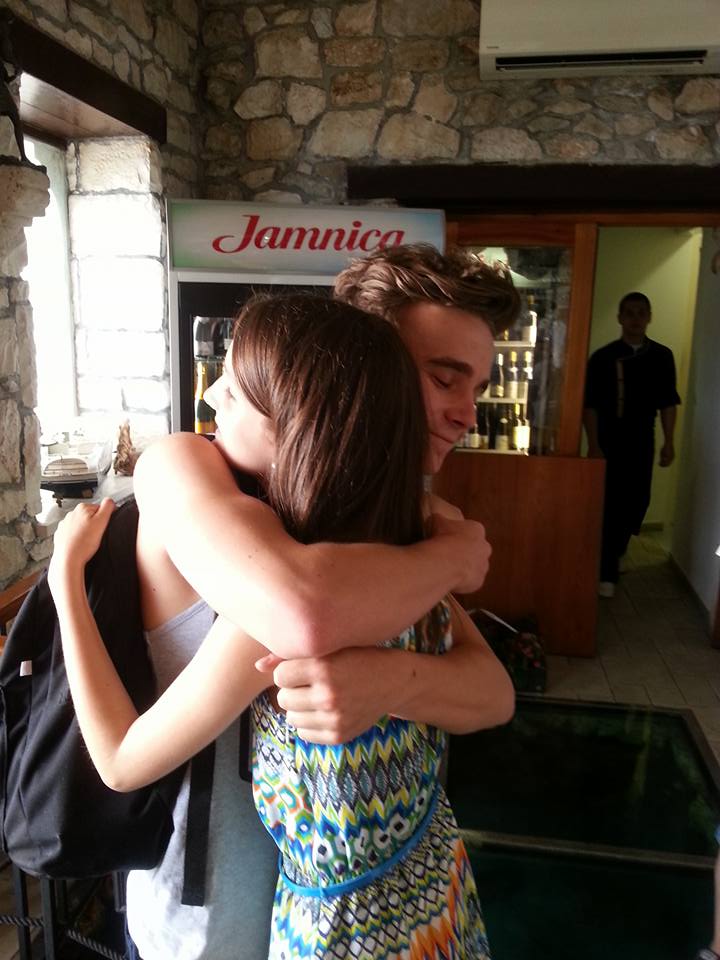
And granddaughter Annie was VERY happy with her hug and autographed iPhone in indelible marker.
The reason I mention the YouTuber visit was not for the above, but for what happened next. I had several requests for more details of the places they had stayed and visited, as fans (mostly teenage daughters) wanted to eat and sleep in the same places they had been. One friend even came to the island just to take his son to Gariful to dinner and have a look at the tank.
More than 30 years ago, I was living in Munich and told my family I was going to South America to 'find' myself and I had no idea when I would be back. My younger sister was so upset that I promised we would do something special together before I left, whatever she wanted. As a huge A-ha fan, it took her seconds to get over her misery:
"You can take me to see Morten Harket's home town in Norway, maybe we can find his house."
And so I did, hitch-hiking from Munich to Oslo to meet her at the airport (3.5 days), before we took the train to Kongsberg. We never found his house, but she did get a plastic bag with the word 'Kongsberg' on it, and back at school with her jealous mates, that was almost as good.
The point to both of these stories is that fans are always interested in the roots of their idols. Tap into that interest (just like Game of Thrones filming spots), add some outstanding content, and you have gold.
Meanwhile, in the Kingdom of Accidental Tourism
There isn't much which shocks me anymore about the Kings and their approach to promoting tourism in this country, but a message from a Zadar friend a few days ago managed to do just that.
"So here we are in Zadar Old Town, Modric-land, and not only is there no content about Modric, but you cannot even buy a Modric shirt."
So one of the biggest names on the planet last year, with millions of fans, many of whom will be like my sister and the YouTube fans above, would be tugging at their parents' shirts, asking if they can go and see the places he was born, lived, played football on the street.
Imagine if the Kings stopped obsessing with their beloved statistics and worshipping at the Temple of Record Overnight Stays and started providing some CONTENT for tourists, how much happier the tourists would be.
Let's take Luka Modric and Zadar. How do we turn this into a huge hook to Zadar and an enjoyable family experience?
I went into greater detail in a dedicated article on the subject, which you can read here.
But essentially, playing soccer in the streets where Luka did growing up would be a very cool thing for young kids with dreams of playing in a World Cup Final. Start a Luka Modric street soccer tournament or something similiar - content and activity. Visit the village of Modrici where he lived. Now abandoned and a great place for selfies, and a chance to introduce tourists to traditional Dalmatian ways of life and cuisine. Give the kids a chance to try goat-herding, as Luka famously did on camera as a 5-year-old.
Hell, why not throw in a couple of wolves for those into adrenaline sports...
See if any of his classmates or coach would want to be part of the package to explain how his career got started. Content for all the family.
There is always talk of how best to develop the lesser-known destinations of Croatia away from the crowded pressure points. Here is another World Cup gift, the origins of some of the World Cup Stars:
Mandzukic - Slavonski Brod
Vida - Donji Miholjac
Perisic - Omis
Kovacic - Zagreb
Dalic - Varazdin
Kalinic - Solin
Rebic - Imotski
Lovren - Karlovac
Not too many massive hot spots there, but some fascinating places. Watching Vida's homecoming in Donji Miholjac, for example, I put it on my bucket list.
Go and create the content for the destinations above.
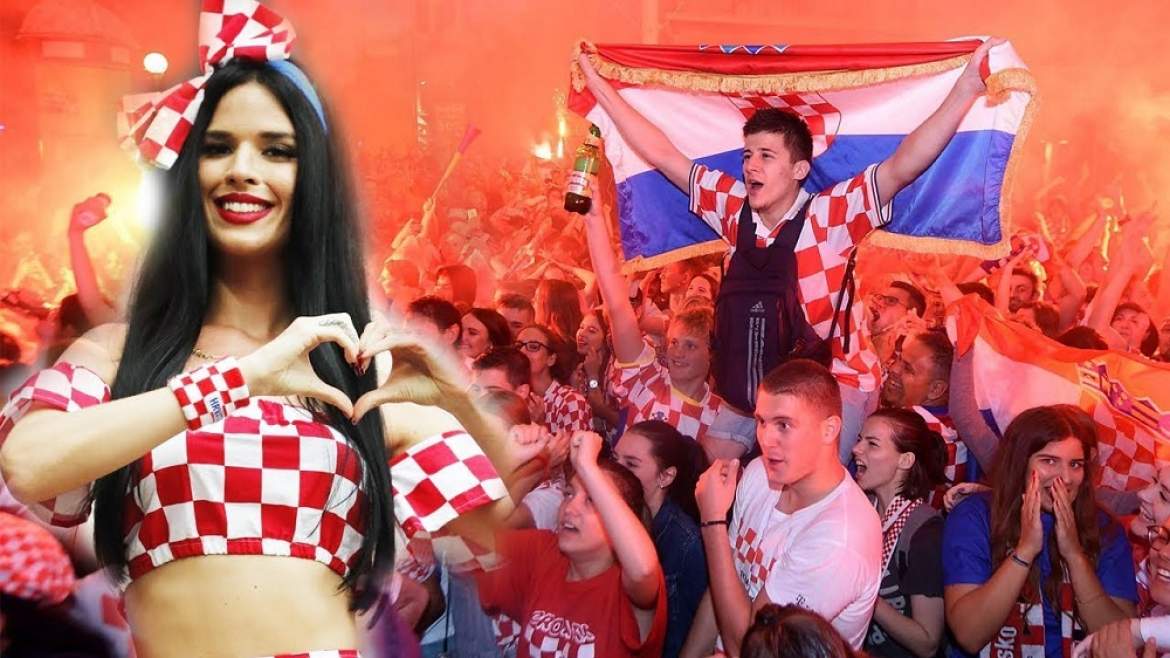
Eight months ago, I wrote why Croatian football and tourism should be branded together. And yet there was absolutely zero done (am not saying anyone should act on my articles, but it was just so obvious).
And it is not just capitalising on the success on the pitch. In my opinion, a huge part of Croatia's success and popularity was also due to the excellent and photogenic fans, as well as THAT shirt.
Due to the success in Russia, it is probably one of the most recognisable patterns of any country in the world, even today. So why not use it?
Why not have a strategy to have the chequers from the shirt as the background to Croatian stands at fairs around the world. Croatia, Full of Life if it has to be, but have a large section of the stand in the chequers with a big exhibition - Meet the World Cup Stars and the towns and cultures they are from, then give people reasons to go and visit.
Meet a global promoter of Croatian excellence using the Croatian brand - Ognjen Bagatin

Nobody understands this better than one of Croatia's best international promoters, Ognjen Bagatin. Bagatin -pictured here in Sydney with former Manchester United, Chelsea and Aston Villa goalkeeper, Mark Bosnich (ANOTHER football connection) - runs one of the leading clinics in the region, Bagatin Clinic, which was voted, among other things, as the best dermatology clinic in Europe last year.
He is a tireless promoter of Croatia's huge medical tourism industry, as well as strengthening business ties between the diaspora and the Homeland. And he also gets the occasional photo for Villa fans suffering with their current Croatian keeper, young Kalinic.
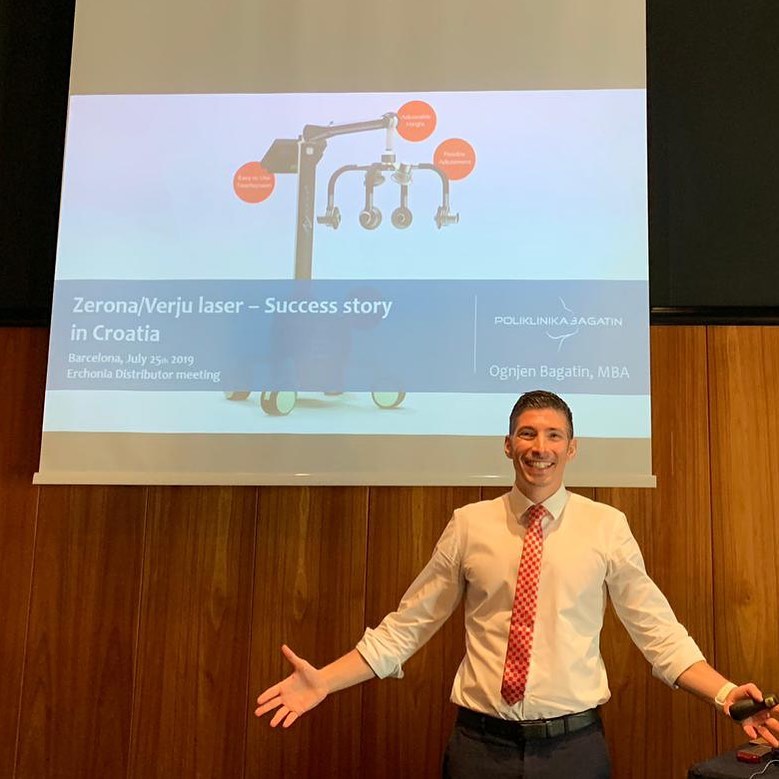
This was Ognjen in action in Barcelona last week, presenting and celebrating some aspect of Croatian medical excellence. And it is not the first time I have seen him where that tie. It is part of who he is, and it brands Croatia.
Great medical tourism in that great football country, huh? Maybe Croatia is worth another look.
Imagine a tourism fair with so many countries to choose from. Now imagine families wandering around and seeing the chequered Croatian stand. An immediate draw. And when they get there, incredible content on the towns their heroes are from.
Brand Croatia with those famous chequers, and ask business and tourism ambassadors to play their small role. I am sure that many of them would be delighted and proud to do so.
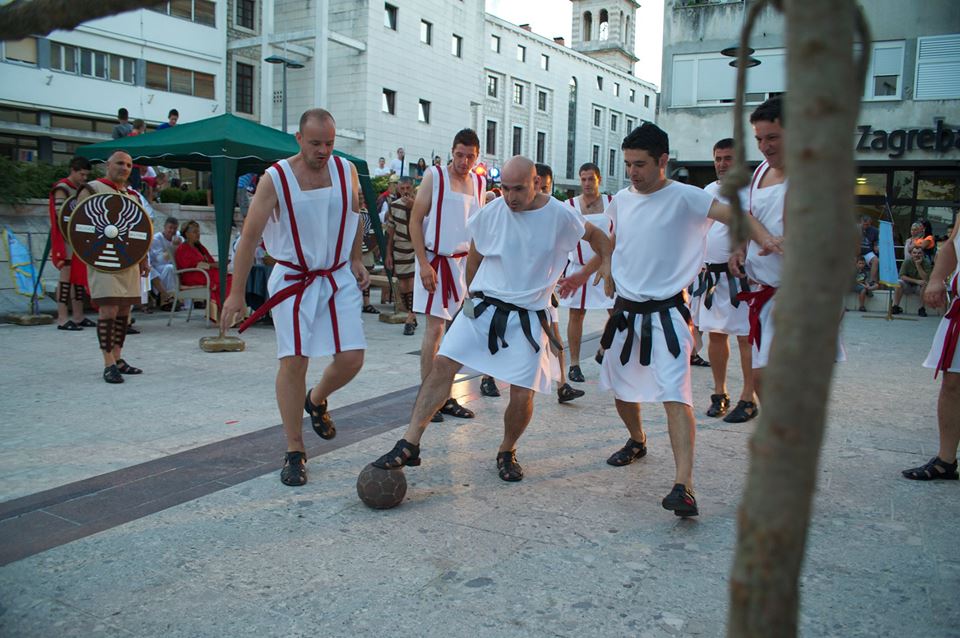
(Photo credit Sinj Tourist Board)
I could go on about how it is no wonder that Croatia is so good at football as it was invented in Croatia, or how Croatia has the strangest football match in the world, see below, but let's leave that for another time. But remember, there are the Euros next year, and there will be more World Cups.
Croatia's eVisitor Reports in .pdf Format Are of No Use to Anyone
Ivan Brezak Brkan, an online strategist, journalist and editor-in-chief writes for Netokracija.com about the manner in which tourism data is made public in Croatia.
When he presented the results of the visits based on the national eVisitor system for the recording of tourists in Croatia, Minister Gari Cappelli explained why the Ministry has decided to make the results public three times in a year instead of once a month:
"I want to approach tourism in an as overall manner as possible. The way we appreciate tourist results and tourism globally chages, and it's difficult to follow the results from one Thursday to another and keep objectivity in those analises, as that data can often not be compared, because of the holidays and similar factors. That's not fair towards those working in tourism, nor is it air to the guests, either. That's why we won't be comparing day-to-day, rather, we'll present "the laps", the results at the end of the pre-season, the main season and during full tourist season,'' Cappelli explained.
At the same time, the minister promised that the media will still be able to request the data and that they will receive it, although since May that has not been possible. The results for May were published two months later, on the Croatian Tourist Board's website.
Ever since the announcement was made, it was obvious that it made no sense, as commented by Goran Rihelj for HR.turizam, but also that it's a PR decision that could harm Croatian tourism in the long-term. Marko Rakar, the analyst, explains that it's public data that needs to be published:
"The reports from the systems like these should be automatised, and published at the moment we believe that we have full and precise data; there's no reason to have it any other way. It's not the ministry's job to decide what is or isn't the relevant period of publication, that's the media's or the expert's job to decide.
The data needs to be accessible, as it was acquired through the publicly funded system of taxes, as well as be open and available without procedures, announcements, or a waiting period. The proposal to present the data three times in a year is an intellecutally limited view of an "uhljeb", as always, who doesn't have the capacity to see the bigger picture, or work for the betterment and the development of this country. Rather, as any other gatekeeper, they've decided to collect the data and make it available to whomever and whenever they want to, while maintaining the inability of any kind of independent control and the discovery of false data."
The only advantage of the reports every three months would be for the Ministry of Tourism and the Croatian Tourist Board to present the data in a manner that works for them, "packaging" any bad results more easily. Media portals such as Index or Telegram would find it more diffidcult to use arguments about the problems during the tourist season if they had no data to support their ideas. Some media portals have the tendency, of course, to give in to the dramatic titles and speculation instead of a proper analysis and critical opinions, but open data is the best basis for the independent analysis of all viewpoints.
Less than a week later, the Ministry of Tourism reversed their decision and decided that everything will be as it was, and that early in every month, the statistics from Croatia's eVisitor system will be published on HTZ's website in PDF format.
Image by Netokracija
It would appear that someone warned Minister Cappelli that on July the 16th, 2019, the new European directive on open data and the re-use of public sector information came into force. Its goal is exactly to prevent what was proposed just a few days ago in the Ministry and the Tourist Board.
Melisa Skender from GONG commented: "The EU directive on open data puts the statistical data, and the data from HTZ is in that category, in the group of special, highly valuable sets of data that need to be available in machine-readable format. PDF is certainly not that type of format. In the other words, despite what HTZ has said, everyone who wants to demand the information in an open format, such as on an Excel table, should get the data."
The Ministry of Tourism might hope that changing their minds about when the data is presented solves at least one reason to be criticised. However, we must at this moment understand that the monthly reports in PDF format are simply not enough. As they're not machine readable and according to the standards set by the EU Directive, the consequences are:
- It makes it more difficult for the rare types of media in Croatia that has the capacity and the desire to perform data investigative journalism to perform the data analysis;
- To the people working in tourism, it makes it impossible to analyse the data for their portion of the market, or to compare data from various sources;
- New entrepreneurs are not given the opportunity to use the open data to find the new ideas to create new value and jobs on the market;
- It makes it more difficult for people in hotels, renters and those in the hospitality business to use the data to bring better business decisions.
Rakar makes a point that the Ministry of Tourism and HTZ should take it a step further: "They should be providing the sets of data with rich historical information and more precise localities of where tourists chose to stay, so that the aforementioned people in the tourism business could make business decisions on time and be able to create plans based on real data, and make decisions on investments and new content."
Cappelli does not need to re-invent the wheel. The global tourist market is filled with the examples of how to present the data contained within the eVisitor system. The town of Glasgow, for instance, hosts a website which is a dashboard, where you can see both the big picture and the segments. Unlike HTZ, Glasgow allows you to see the data for specific types of tourists, such as for instance, the foodies.

Image by Netokracija
Probably the best example, which should be the role-model for Croatia, is New Zealand, which is an overall role-model on how to do branding and tourist positioning. You can access all of their tourism data on Stats NZ, and it's even possible to analyse the data and even download it if you want to. To make it easier for the public and the media to find their way to the data, their Ministry provides you with the comprehensive series of links, which will take you to the specific segments.

Image by Netokracija
One of the examples of what could be done with the data was given by Professor Bela Stanić from the Griffith Institute of Tourism, as he announced the work on the project Human Sensor, showing that using analyses in real time can lead to more relevant information for tourism using social networks, blogs and tourism websites. The announcement of this logical step came in 2016, and now in 2019 we're dealing with PDF format, which limits access as well as not publishing at all. Considering the fact that even the banks will be forced to open up in September of this year, there's no excuse for the Ministry of tourism and HTZ!
If they really want Croatian tourism (and the economy; as tourism makes up 20 percent of Croatia's economy, which is the highest percentage in Europe), Minister Gari Cappelli needs to make sure that in the autumn, in preparation for the tourist season 2020, Croatia's eVisitor system is open through the actual internet dashboard and an API available not three times in a year or once a month, rather - the data should be available in real time. Nothing less will suffice.
Follow our dedicated travel page for much more.
Croatia's Tourism Suffering, How Are Things For Our Competition?
We've talked a lot about how the tourism situation in Croatia this tourist season has been a little off. Very much off, actually. While some report no particular changes, highly popular restaurants in Dubrovnik are being pictured just half full, Jadrolinija ferries are being pictured half empty, bookings are down significantly, and Croatia has quite strangely restricted access to tourism figures. Weird, right?
There are a multitude of reasons why Croatia's 2019 tourist season is a drag, but one of the reasons Croatia needs to get its act together in regard to bringing tourists in and stop relying on old (and accidental) glory is the fact that some of its competition countries in the Mediterranean are recovering, and their prices are usually far, far more attractive than Croatian ones.
As Marija Crnjak/Poslovni Dnevnik writes on the 17th of July, 2019, the European Commission for Travel (ETC) expects that the demand for tourism in Europe will remain with an upward trend in 2019, with growth of 3.6 percent.
It isn't only Croatia that has recorded minuses or stagnation this summer, owing to competition countries who returned to the ''tourism game'' in 2019, primarily Turkey, which, with its very low prices, has pulled many tourists away from the likes of Montenegro, Greece, and even from Europe's tourism king - Spain.
Although the European Commission for Travel does continue to provide optimistic forecasts for destinations in Europe in its report for the second quarter, the current situation is causing many to fear the decline in tourist traffic and tourism revenues this year.
The European Commission for Travel's report (ETC) for the second quarter cites expectations that tourism in Europe will remain upward in 2019. A growth rate of 3.6 percent is projected, which is more in line with the annual average from 2008 up until 2018, but is in fact less than last year's growth.
The report states that in the first two quarters of 2019, the Balkan region was the most successful in terms of growth in arrivals, with Montenegro as the record holder with a massive fifty percent increase in the period from January to the end of April, while Turkey experienced such growth at a mere twelve percent. Both Slovenia and Greece recorded significant growth in the first quarter of 2019, both with eight percent growth, and the EC has given a positive forecast for Greece, despite the return of Mediterranean rivals like Turkey.
As is well known, Croatia had six percent more arrivals and three percent more overnight stays in the first six months of this year than it did during the first half of 2018, but for the first time in a few years, there was a significant slump in July.
Namely, in the first twelve days of July 2019, the number of Croatian overnight stays fell by almost five percent, while tourist arrivals dropped by 6.2 percent, according to eVisitor data. The year, however, is still in the surplus, but for the time being, the encouraging percentage figures are drawn entirely from Croatia's successful pre-season, which of course also yields significantly lower tourism revenues than the summer months do.
Optimism hasn't managed to touch on the announcements of Croatia's hoteliers either, a segment in which reservations have dropped during summer so far, and were in the range of three to seven percent in mid-June. On certain portals which have group deals, there are several offers for leading Adriatic hotels and destinations for the end of July, which have been overcrowded over the past three years. Worrying indeed.
Although official figures suggest that the tourist season in neighbouring Montenegro remains at last year's level, those ''from the field'' in Montenegro have warned that the situation is much worse than last year, and that there is a fear that, if this trend continues along with possible unfavourable weather conditions, the season in the popular coastal town of Budva could experience collapse.
The Montenegrin Tourism Association's Petar Ivković, has stated that online sales figures in Montenegro indicate almost forty percent less individual reservations, and that reservations have been booked on the markets of Turkey, Greece, and Egypt.
Ivković agrees that Croatian and Montenegrin tourism are facing a very similar problem - the overgrowth of private accommodation facilities, and has added that only through water consumption and garbage collection calculations in Budva can they mathematically come to the conclusion that Mongenegro's private accommodation is half empty.
Even Greece is experiencing a growing problem of unfair competition in private accommodation, and more and more Greek hoteliers are now expecting a fall in revenue, occupancy, and so prices will have to be lowered in order to fill hotel capacities this summer.
The new Greek government will continue with the tourism policy created by the previous government, and thus facilitate the sector through tax breaks. The new Greek Minister of Tourism of Harry Theocharis has his priorities in order, the first of which is the reduction of the VAT rate from the current 24 percent down to 13 percent for accommodation (with the goal of reaching 11 percent). In addition to the tax breaks, the ministry's agenda is to review resident tax and introduce incentives for the energy renewal of Greek tourist facilities.
The aforementioned Greek ministry will also address the revision of the structure and activities of the Greek National Tourism Organisation (GNTO). They are also planning to partner with the private sector to promote and improve the country's brand, and organise the promotion of alternative tourism.
Even the Spanish Tourism Excellence Association (EXCELTUR) confirmed that this summer there has been a slowdown in Spanish tourist traffic, which is currently at 2018's level, with a moderate increase in revenue.
EXCELTUR expects growth of 1.6 percent this summer, down slightly from 2 percent last year. However, in the second quarter of 2019, Spain recorded a decline in tourist traffic in destinations selling just sunshine and sea, unlike Spanish city destinations.
The largest minus have been seen in the traditional beach destinations in Spain, which are more dependent on the demand of foreign tour operators, especially on the Canary islands and in the Balearic islands. Barcelona, Madrid and Valencia have the best forecasts for the rest of the summer. In addition, as vice president of the association José Luis Zoreda explained, the results vary considerably between those destinations and hotels that invested in reconstruction and renovation of their facilities, and those who didn't invest.
Spanish entrepreneurs in tourism are still optimistic according to surveys, and as many as 40.7 percent believe they will increase their sales when compared to last summer. Obviously, Turkey is an absolute hit this year, and in the first five months of the year, it had 11 percent higher turnover than it did last year, with growth expectations of 10 percent year-on-year.
Can Croatia adjust itself accordingly to repair its tourism situation? Only time (and an actual strategy outside of obsessing over eVisitor's figures) will tell.
Make sure to follow our dedicated travel page for much more.

